The UK National Charity for History
Password Sign In
Become a Member | Register for free

The Vikings in Britain: a brief history
Reference guide for primary
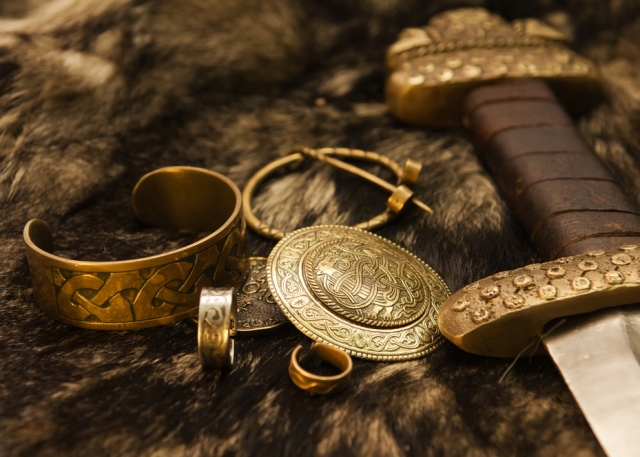
- Add to My HA Add to folder Default Folder [New Folder] Add
Viking Age | In Britain: background | Short history | King Alfred | Later raids & rulers | Key concepts
The Viking Age
The Vikings' homeland was Scandinavia: modern Norway, Sweden and Denmark. From here they travelled great distances, mainly by sea and river – as far as North America to the west, Russia to the east, Lapland to the north and the Mediterranean World (Constantinople) and Iraq (Baghdad) to the south.
We know about them through archaeology, poetry, sagas and proverbs, treaties, and the writings of people in Europe and Asia whom they encountered. They left very little written evidence themselves. As well as warriors, they were skilled craftsmen and boat-builders, adventurous explorers and wide-ranging traders. See Viking trade and Viking travel .
What we call the Viking Age, and their relationship with England, lasted from approximately 800 to 1150 AD – though Scandinavian adventurers, merchants and mercenaries were of course active before and after this period. Their expansion during the Viking Age took the form of warfare, exploration, settlement and trade.
During this period, around 200,000 people left Scandinavia to settle in other lands, mainly Newfoundland (Canada), Greenland, Iceland, Ireland, England, Scotland, the islands around Britain, France (where they became the Normans), Russia and Sicily. They traded extensively with the Muslim world and fought as mercenaries for the Byzantine emperors of Constantinople (Istanbul). However, by the end of the 11th century the great days of Viking expansion were over.
Vikings in Britain: background and legacy
Historians disagree about the origin of the word Viking. In Old Norse the word means a pirate raid, from either vikja (to move swiftly) or vik (an inlet). This captures the essence of the Vikings, fast-moving sailors who used the water as their highway to take them across the northern Atlantic, around the coasts of Europe and up its rivers to trade, raid or settle. In their poetry they call the sea 'the whale road'.
Anglo-Saxon writers called them Danes, Norsemen, Northmen, the Great Army, sea rovers, sea wolves, or the heathen.
From around 860AD onwards, Vikings stayed, settled and prospered in Britain, becoming part of the mix of people who today make up the British nation. Our names for days of the week come mainly from Norse gods – Tuesday from Tiw or Týr, Wednesday from Woden (Odin), Thursday from Thor and so on. Many of their other words have also become part of English, for example egg, steak, law, die, bread, down, fog, muck, lump and scrawny.
To see questions children have asked about the Vikings, see our Viking starter lesson .
A short history of the Vikings in Britain
In 793 came the first recorded Viking raid, where 'on the Ides of June the harrying of the heathen destroyed God's church on Lindisfarne, bringing ruin and slaughter' ( The Anglo-Saxon Chronicle ).
These ruthless pirates continued to make regular raids around the coasts of England, looting treasure and other goods, and capturing people as slaves. Monasteries were often targeted, for their precious silver or gold chalices, plates, bowls and crucifixes.
Gradually, the Viking raiders began to stay, first in winter camps, then settling in land they had seized, mainly in the east and north of England. See The Vikings settle down .
Outside Anglo-Saxon England, to the north of Britain, the Vikings took over and settled Iceland, the Faroes and Orkney, becoming farmers and fishermen, and sometimes going on summer trading or raiding voyages. Orkney became powerful, and from there the Earls of Orkney ruled most of Scotland. To this day, especially on the north-east coast, many Scots still bear Viking names.
To the west of Britain, the Isle of Man became a Viking kingdom. The island still has its Tynwald, or ting-vollr (assembly field), a reminder of Viking rule. In Ireland, the Vikings raided around the coasts and up the rivers. They founded the cities of Dublin, Cork and Limerick as Viking strongholds.
Meanwhile, back in England, the Vikings took over Northumbria, East Anglia and parts of Mercia. In 866 they captured modern York (Viking name: Jorvik) and made it their capital. They continued to press south and west. The kings of Mercia and Wessex resisted as best they could, but with little success until the time of Alfred of Wessex, the only king of England to be called ‘the Great'.
King Alfred and the Danes
King Alfred ruled from 871-899 and after many trials and tribulations (including the famous story of the burning of the cakes!) he defeated the Vikings at the Battle of Edington in 878. After the battle the Viking leader Guthrum converted to Christianity. In 886 Alfred took London from the Vikings and fortified it. The same year he signed a treaty with Guthrum. The treaty partitioned England between Vikings and English. The Viking territory became known as the Danelaw. It comprised the north-west, the north-east and east of England. Here, people would be subject to Danish laws. Alfred became king of the rest.
Alfred's grandson, Athelstan, became the first true King of England. He led an English victory over the Vikings at the Battle of Brunaburh in 937, and his kingdom for the first time included the Danelaw. In 954, Eirik Bloodaxe, the last Viking king of York, was killed and his kingdom was taken over by English earls. See Egils Saga .
Later Viking raids and rulers
However, the Viking raiding did not stop – different Viking bands made regular raiding voyages around the coasts of Britain for over 300 years after 793. In 991, during the reign of Æthelred 'the Unready' ('ill-advised'), Olaf Tryggvason's Viking raiding party defeated the Anglo-Saxon defenders (recorded in the poem The Battle of Maldon ), with Æthelred responding by paying 'Danegeld' in an attempt to buy off the Vikings.
So the Vikings were not permanently defeated – England was to have four Viking kings between 1013 and 1042. The greatest of these was King Cnut, who was king of Denmark as well as of England. A Christian, he did not force the English to obey Danish law; instead he recognised Anglo-Saxon law and customs. He worked to create a north Atlantic empire that united Scandinavia and Britain. Unfortunately, he died at the age of 39, and his sons had short, troubled reigns.
The final Viking invasion of England came in 1066, when Harald Hardrada sailed up the River Humber and marched to Stamford Bridge with his men. His battle banner was called Land-waster. The English king, Harold Godwinson, marched north with his army and defeated Hardrada in a long and bloody battle. The English had repelled the last invasion from Scandinavia.
However, immediately after the battle, King Harold heard that William of Normandy had landed in Kent with yet another invading army. With no time to rest, Harold's army marched swiftly back south to meet this new threat. The exhausted English army fought the Normans at the Battle of Hastings on 14th October, 1066. At the end of a long day's fighting the Normans had won, King Harold was dead, and William was the new king of England.
The irony is that William was of Viking descent: his great-great-great-grandfather Rollo was a Viking who in 911 had invaded Normandy in northern France. His people had become French over time, but in one sense this final successful invasion of England was another Viking one.
Vikings: key concepts
- Vikings: Scheme of Work
- Podcasts: An Introduction to the Vikings
- The Vikings: ruthless killers or peaceful settlers?
- Viking and Anglo-Saxon struggle for the kingdom of England (Primary History article)
- Teaching Romans, Anglo-Saxons and Vikings in Britain
History | April 2022
Digging Up the Rich Viking History of Britain
A massive 1,100-year-old graveyard leads to a surprising new view of the Nordic legacy in Britain
:focal(1500x1129:1501x1130)/https://tf-cmsv2-smithsonianmag-media.s3.amazonaws.com/filer_public/55/b3/55b3b557-ad11-46b8-9dcf-7529d123781f/openerletterboxed.jpg)
St. Wystan’s church in Repton. In 873-874, a Viking army is believed to have entrenched in the garden. Right, Viking burial mounds in Heath Wood.
By Joshua Levine
Photographs by Kate Peters
Cat Jarman led me through a dense tangle of forest called Heath Wood. We were in Derbyshire, close to the very heart of England. There was no path, and the forest floor was overgrown with bracken and bush. It was easy to lose your footing and even easier to lose your way. Jarman, a fit, cheery woman in her late 30s, plunged jauntily on as I tried to keep up. “See all these lumps and bumps?” she asked as we broke into a small clearing. She pointed to an array of 59 small, rounded hillocks, many two or so feet high and four or five feet in diameter. Humans, not nature, had clearly put these things here, and they gave off a spooky, supernatural energy.
“We are literally walking across a Viking cemetery—the only known Scandinavian cremation cemetery in the whole country,” says Jarman, an archaeologist, whose new book, River Kings , takes a fresh look at who the Vikings really were and what exactly they were up to here. She flashes me a broad smile. “It’s very good, isn’t it?”
Yes, it is good—simple, powerful and mysterious. For a ceremonial burial place, the Vikings picked a surprisingly unceremonial spot. The overgrown forest shrouds these tombs in anonymity. There is no visible sign of a Viking settlement nearby, just an expanse of open fields and beyond that, a hamlet with a church, school and a few houses. The Vikings used rivers to get around, but it’s an awfully long hike from here to where the River Trent flows today. Which raises a big question, says Jarman. “Why have you got these Scandinavian cremation mounds here in the middle of nowhere?”
The Viking job description always included violent combat and pillaging.
/https://tf-cmsv2-smithsonianmag-media.s3.amazonaws.com/filer_public/84/46/8446ff0a-4188-44da-a7aa-eb915fcec1b4/aprmay2022_d15_vikings.jpg)
Jarman thinks she finally found the answer, but only after new research techniques, changing attitudes and some good luck filled in numerous blanks. A thousand years ago, Heath Wood was likely bare of trees and could be seen from all around. The Trent flowed close by back then; lidar satellite imagery now reveals how dramatically the river has shifted its course in the past thousand years. And the empty fields around Foremark have been transformed by scholarship into the likely site of a Viking settlement. The men and women who lived there may have come with the Viking Great Army around A.D. 873, but they didn’t all leave when the army moved on. They stayed and sank roots in England.
In general, apart from stone sculptures and place names, the Vikings have left us little record of their 250-year moment on the stage of English history, roughly from the end of the 8th century to the middle of the 11th. Scholars are left to pick over some old bones, sometimes burnt and sometimes not, and the useful objects that accompanied their owners into the hereafter—what archaeologists call “grave goods.” The Vikings also left silver coins and jewelry, sometimes buried for later retrieval and known as a hoard, or, far more often, scattered haphazardly across the fields, where they await the amateur metal detectorist’s electromagnetic pulse.
/https://tf-cmsv2-smithsonianmag-media.s3.amazonaws.com/filer_public/c6/84/c684324b-cb30-4b42-960c-5879208b73ab/aprmay2022_d14_vikings.jpg)
That’s pretty much it. The Vikings left no contemporaneous written record, and later Icelandic sagas, while gripping, are uncertain guides. The Vikings likely did construct dwellings in England. “But most of the buildings in that period, other than churches, were built out of wood, like the timber halls with Scandinavian ornament depicted in the movies The Lord of the Rings . We don’t have them,” says Julian Richards, an archaeologist and co-author, with Dawn Hadley, of a 2021 book, The Viking Great Army and the Making of England . It draws new conclusions from findings at Torksey, where the Vikings spent the winter of 872 to 873 before marching south to Repton and likely Foremark and Heath Wood.
It seems Vikings are everywhere these past few years, and why not? Who doesn’t love these “hairy men, as huge as sin with horned heads,” as the Victorian poet G.K. Chesterton disparagingly called them. They teem through Bernard Cornwell’s best-selling book series The Saxon Tales , and the TV series based on the novels, “ The Last Kingdom .” They swarm over the English countryside in 89 episodes of the History channel series “ Vikings .” What you often get in these red-meat extravaganzas is a bunch of Thor-happy thugs. The shout goes up, “Shield wall!” and we see them prepare to slaughter the hapless Anglo-Saxons, who never seem to know what hit them.
But the Vikings are also coming back to a richer, more nuanced life in a surge of scholarship by people like Jarman and Richards. It has begun picking apart the classic narrative of the Vikings in England, the account that casts the Vikings as interlopers who strutted their noisy hour upon the stage and disappeared from English history without a trace. “I would say the change in perception is quite revolutionary,” says Richards.
Don’t expect to find Erik the Pussycat at the end of this new research. The Viking job description always included violent combat and pillaging. But the new-model Viking had considerably more on his mind than plunder. There was also trade and craft and urban development and language. Instead of waiting out the Vikings until they went away, the Anglo-Saxons reaped the myriad benefits of a broad cultural intermingling that many people still think never happened. “The world turned empty where they trod,” wrote Chesterton. Not so, say Jarman and Richards. The Northmen—and as we are coming to know, women—made as indelible and lasting a contribution to English identity as the Anglo-Saxons.
That’s a controversial position to stake out in these days of Brexit. The national myth of Alfred the Great and Anglo-Saxon triumphalism will not go away quietly. “All archaeological and historical interpretation is politicized in a sense. We are writing in the moment,” says Richards. “Dawn and I have always been keen in our work to say that we shouldn’t be oversimplifying identity. It pains to emphasize the contribution of racial mixing and movement.”
/https://tf-cmsv2-smithsonianmag-media.s3.amazonaws.com/filer_public/39/59/3959476b-f35c-4ef3-be11-5965cc4abecb/aprmay2022_d05_vikings.jpg)
Starting in 1998, Richards was part of the team that opened some of the barrows in the Viking burial ground of Heath Wood. This wasn’t the first excavation of those mounds. A small number were dug up in the mid-19th century, and again in the mid-20th century. Those digs unearthed objects such as sword blades and sword fragments that pointed to the ninth or tenth century and suggested Scandinavian origins but couldn’t be confirmed. More was revealed when Richards and the other members of his team opened three additional mounds. One contained the charred ash and bone of two bodies: an adult, possibly a woman, and a youth, who might be a young warrior or even a child. It could be the case of a female slave buried with her young master; such grim ceremonies were recounted in the old annals. Or it could be a female warrior; recent finds in Scandinavia now make this a more plausible hypothesis. We just don’t know. A cow jaw was found as well: a remnant from a ritual feast? A sacrifice? We can’t say. But Richards and his colleagues established for the first time that these were indeed late ninth- or early tenth-century Vikings. Some were cremated on the spot where they were found, while others were cremated elsewhere and transported—both practices were common. Oh, they found horse bones, too—Viking horses, according to isotope analysis. Whoever these Vikings were, they brought their horses to England. That was an important discovery.
/https://tf-cmsv2-smithsonianmag-media.s3.amazonaws.com/filer_public/35/f2/35f2b02a-b4d6-42d6-b782-6f6aa6fafe10/aprmay2022_d01_vikings.jpg)
The story of the Vikings in England is generally held to start on June 8, 793, when a raiding party landed on the tidal island of Lindisfarne in Northumbria. As the Anglo-Saxon Chronicle , a survey of English history written in the late ninth century, records: “The harrowing inroads of heathen men made lamentable havoc in the Church of God on Holy Island, by plunder and slaughter.” Lindisfarne established a pattern of Viking hit-and-run raids in the summer months, but by the 850s, some of these raiders were choosing to overwinter in England.
And then everything changed—decidedly for the worse if you were an Anglo-Saxon. In 865 the Great Heathen Army—translated from micel haephen here in Old English—landed in East Anglia, the small Anglo-Saxon kingdom on England’s eastern coast. No one knows precisely how great it was or what kind of “army” was meant by the Old English word here . Those questions still puzzle archaeologists. But whatever its precise dimensions, this army was a new and terrifying force.
The Great Army spent the next ten years causing havoc up and down the four Anglo-Saxon kingdoms of East Anglia, Wessex, Mercia and Northumbria. Its aim was conquest, not plunder. They entered treaties, deposed kings and installed puppets, and in general made life miserable for the people of what was to become England.
The village of Repton, some two and a half miles up the road from Heath Wood, is a leafy hamlet in what was once the powerful Kingdom of Mercia. The Repton School, founded in 1557, educated such pillars of Englishness as the actor Basil Rathbone and the Olympic sprinter Harold Abrahams (an inspiration for the film Chariots of Fire ). The lovely Church of St. Wystan’s, with its simple spire, casts a medieval glow over the countryside. The crypt beneath the church goes back even further, to the eighth century. Here were buried the kings of Mercia, Aethelbald and Wiglaf, and also Wiglaf’s grandson, St. Wigstan (also spelled Wystan), who gave his name to the church. In the ninth century it was a place of pilgrimage and power.
/https://tf-cmsv2-smithsonianmag-media.s3.amazonaws.com/filer_public/17/d3/17d34360-d787-4eb1-aba1-3621b84fa1c9/aprmay2022_d13_vikings.jpg)
In 1974, the archaeologists Martin Biddle and his wife, Birthe Kjølbye-Biddle, began digging around the old crypt of St. Wystan’s in search of the church’s Anglo-Saxon roots. Several years later, “we said, well why don’t we do some digging outside,” Martin Biddle told me. “There was this extraordinary mound in the vicar’s garden, and we thought we’d better have a look. That brought us face to face with the Viking presence. The rest is history.”
The entry for the year 874 in the Anglo-Saxon Chronicle reads: “This year went the [Great Army] from Lindsey to Repton, and there took up winter quarters, drove the king, Burhred, over sea...and subdued all that land.” It looked to everyone like the Biddles had come across the Viking winter camp.
Around the church, they found a broad, semicircular ditch forming a D-shaped enclosure. There were similar defensive structures discovered in Scandinavia. In the vicarage garden, the Biddles found a shallow mound with the bones of 264 bodies.
In the vicarage garden, the Biddles found a mound with the bones of 264 bodies and a double grave containing two men.
/https://tf-cmsv2-smithsonianmag-media.s3.amazonaws.com/filer_public/45/33/45330486-7aa1-4cde-bbf8-3dbd56848fcc/aprmay2022_d10_vikings.jpg)
The Biddles also discovered a double grave containing the skeletons of two men. The pair, labeled Warrior 511 and Warrior 295, have become the most celebrated dead Vikings in England, but nobody knew who they were. Warrior 511, recently determined to be between 35 and 45 years old, had met the kind of death in battle that Vikings are always saying they want. A battle-ax sliced through his left side, most likely lopping off his left testicle and penis before leaving a deep gash in his left femur. He may have been brought here from elsewhere—no one knows where exactly—and buried with everything he would need for a healthy Viking afterlife in Valhalla—a silver hammer-of-Thor pendant, a sword, two daggers, buckles and hasps for fastening clothing. A boar’s tusk lay near his pelvis, which archaeologists such as Jarman think may have stood in for 511’s missing penis.
He was buried with everything he’d need for a healthy Viking afterlife in Valhalla.
/https://tf-cmsv2-smithsonianmag-media.s3.amazonaws.com/filer_public/97/cc/97cc8b6b-65dd-42dc-9654-29aae605fb90/aprmay2022_d19_combo_vikings-border.jpg)
Jarman first came on the scene in 2011 as an archaeology student, and she has been digging here off and on ever since. Years after the Biddles first found it, the Repton site has raised as many questions as it has answered. For starters: If the Great Army is so great—accounts from the period put its number in the thousands—how come the D-shaped enclosure is so small? You would be hard-pressed to house a street gang in it. Isotope dating studies of the bodies in the vicarage charnel mound found wide disparities. While many remains clearly dated to the period when the Great Army passed through, others seemed to come from much earlier. What were they doing there? And, perhaps less important to scholars but at least as intriguing to the likes of you and me, who might Warrior 511 and Warrior 295 have been, and what are they doing sharing a grave?
Jarman was showing me the place where the two warriors were found. The grass has grown back over their tomb in the shadow of St. Wystan’s. In the vicarage garden, the bodies in the charnel mound have gone back to sleep. But in new trenches in the garden, Jarman’s hunt for broader evidence of the Great Army’s presence here continues. Repton is still open for business. Jarman recently found weapon fragments and ship’s nails. “Martin Biddle is a fantastic archaeologist, but it’s a very complicated set of excavations, so work is still ongoing 40 years later,” says Jarman.
In 2018, Jarman published a study of the inconsistent radiocarbon dates among the old bones in the garden. Jarman argued that the discrepancy could be explained by the different diets of the people whose bones were radiocarbon-dated. Carbon from the sea circulates for 400 years on average before it enters the food chain—far longer than carbon from the atmosphere. As a result, the bones of people who eat primarily fish appear in tests to be considerably older than the bones of people who eat primarily meat, which absorbs its carbon from the atmosphere. After correcting for what is called the marine reservoir effect, Jarman found that all the bones dated from roughly the same period—the time when the Great Army wintered in Repton.
/https://tf-cmsv2-smithsonianmag-media.s3.amazonaws.com/filer_public/c1/a7/c1a77b08-66f1-47c3-a8c5-7066a33cb762/aprmay2022_d08_vikings.jpg)
Jarman thinks she may have put names to the two warriors, too. Her isotope analysis of the warriors’ teeth had already told her they both came from somewhere in the south of Scandinavia, probably Denmark. She then collaborated with geneticists at the University of California, Santa Cruz to extract and analyze DNA extracted from teeth and bone. Using very recent techniques to investigate both maternal and paternal DNA, Jarman determined the pair were first-degree relatives, and most likely father and son.
From there, she combed the annals for references to Viking fathers and sons raiding in the British Isles around that time. Bingo! The Annals of Ulster tells of a Viking king named Amlaib, also known as Olaf, who raided in Ireland and Britain in the years after 853. Olaf was killed fighting the Picts in Scotland in 874, which jibes with a return to Repton for burial. Moreover, Olaf had a son named Eysteinn (or Oistín), who according to the Ulster Annals , was “deceitfully killed by Albann” (often identified as Halfdann). This Halfdann turns out to be one of the Great Army’s four leaders at Repton. It’s far from proof positive, but the two famous warriors are no longer just numbers. Jarman has managed to give them plausible names and back stories.
If the Great Army couldn’t all fit in St. Wystan’s churchyard, they must have gone somewhere else. Where did they go? The answer may lie down the road from Repton in Foremark, the area beside the isolated Viking cemetery in Heath Wood.
In 2017, Jarman was a guest on a BBC-TV broadcast called “ Digging for Britain ” (Jarman’s breezy, unpedantic manner has made her a popular interview subject). “When I was doing that program, I tweeted a picture of Foremark, and somebody tweeted me back and said, ‘Oh, my mate metal-detects around there and he’s always finding really brilliant Viking artifacts,’” Jarman recalls.
This was a windfall. Jarman had been trying for years to work with local metal detectorists and getting nowhere. “We know that people metal-detect around here, but nobody has ever reported anything Viking, which is bizarre,” says Jarman. “Nobody was willing to talk to me. It was really difficult.”
In general, there is little love between detectorists and archaeologists. Since the 1970s, England and Wales have seen an explosion in metal-detecting as a hobby. There are now about 20,000 amateur detectorists, who turn up all kinds of things, including much of what the Vikings dropped. The trouble is, many detectorists, instead of donating their finds to scholarship, would rather sell them on the sly. Archaeologists refer to such opportunists as “nighthawks.”
In 1996, England passed the Treasure Act, which makes it illegal to sell objects that are at least 300 years old with over 10 percent gold or silver content (the odd coin is exempt). A year later, England and Wales created a voluntary database called the Portable Antiquities Scheme (PAS) to log disparate finds not covered by the Treasure Act—a brooch here, a pendant there.
These two mechanisms, the Treasure Act and the PAS, haven’t worked flawlessly—skulduggery persists. In 2019, two detectorists were sentenced to long prison terms for secretly trafficking the Leominster hoard, a dazzling trove of Viking jewelry and coins that they had found in a town near Hereford. Most of the hoard has vanished into private hands, a terrible loss to history.
But in the main, the carrot and stick of the PAS and Treasure Act have worked to coax out a profusion of Viking objects that otherwise might never have surfaced, particularly in the past five to ten years. Says Julian Richards: “The logging and recording of finds through the PAS has opened huge research avenues in the U.K., whereas previously a lot of archaeologists were very concerned about metal detecting.”
The detectorist who contacted Cat Jarman after her TV broadcast had not reported his finds to the PAS, but he was happy to show her what he had discovered in the fields of Foremark below Heath Wood. The heaps of coins, Thor-hammer pendants and lead gaming pieces were the link Jarman had been searching for.
“Here was all the missing stuff we didn’t have before,” says Jarman. Repton’s army came into focus. “I think some of the army were in Repton, possibly guarding the main site and the valuable bits and pieces. And then you have the general riffraff, all the normal people, up here. I think Foremark became a Viking settlement. We haven’t found it yet because I suspect it’s underneath a local school, which they haven’t let me dig up yet. I’m working on it.”
A crucial part of that Viking settlement, says Jarman, was the graveyard atop Heath Wood. “I think it’s staking a claim, as if to say ‘This landscape and the whole location belongs to us, the Vikings!’” “The standard narrative has been, the army comes, the army leaves, and that’s it—the end of the Repton story, 873 to 874,” Jarman goes on. “That is what I don’t agree with. This idea that the Vikings come and then they go is absolutely not the case. I think the Repton story is much longer than that.”
/https://tf-cmsv2-smithsonianmag-media.s3.amazonaws.com/filer_public/72/19/72191981-56ec-427b-bb7e-9cb6ef0df6c5/aprmay2022_d17_vikings.jpg)
Jarman pointed me to an archaeologist named Jane Kershaw, whose recent work has given Jarman’s ideas a considerable boost. Richards cites Kershaw, too. For her PhD research, Kershaw surveyed the Scandinavian jewelry in the PAS database. As she did, she started noticing brooches and pendants that were identical to pieces she knew from Scandinavian museums, some with casting flaws indicating they came from the same master mold. For the most part, these were not finely crafted pieces made for a ruling elite; they were cheap, mass-produced ornaments for more common folk.
“The jewelry I found is being imported to England on the clothing of Scandinavian women. That means there will be children, too, and a whole family-based settlement structure,” says Kershaw. “I argue that what we have here are whole family groups migrating from Denmark to England” in the wake of the Great Army.
“It’s not a single blip, either. It starts in the late ninth century and continues for 50 to 75 years as the jewelry styles (in England) keep up with the changing fashions in Scandinavia. We tend to think of the Vikings as looting and taking treasure away with them. Actually, what they’re doing is bringing silver in as jewelry and coins. They’re bringing wealth into the country, which probably helps fuel the rise of towns.”
At Torksey, Julian Richards and Dawn Hadley arrived at the same inconvenient truth by a different path. Torksey, which was then part of Mercia, is where the Viking Great Army overwintered in 872 to 873 before moving down to Repton the next year. We know this from the Anglo-Saxon Chronicle . What Richards and Hadley found there convinced them that the Great Army was indeed great, possibly numbering as many as 5,000 people.
/https://tf-cmsv2-smithsonianmag-media.s3.amazonaws.com/filer_public/10/43/1043e02f-3abe-44fb-9363-c126425f2c25/vikings_triptych.jpg)
“Our work at Torksey suggests that the Great Army was akin to a town on the move,” they write in their new book. “The arrival of such a large population must have been the catalyst for urban development in numerous places.”
Back in the 1960s, an archaeologist named Maurice Barley had led students to Torksey on almost a decade of summer digs. They were looking for the town’s medieval ancestors. Among other things, they came across six ancient clay kilns and some pottery shards, perhaps produced by Torksey’s Anglo-Saxon residents. Richards, Hadley and a pottery specialist named Gareth Perry had their doubts. Perry took local clay samples, ran his own pottery-making experiments and figured out how and, more important, when the Torksey ware was made: It was sophisticated, produced on an industrial scale and bore no resemblance to Anglo-Saxon styles and methods.
The finds were eye-opening, Richards and Hadley say. For one thing, there were many more kilns in the area than Barley had found. Moreover, the initial dates of Torksey’s pottery production corresponded to the period when the Great Army passed through. And while Scandinavia itself produced nothing like Torksey ware, regions under Viking influence in northern Europe did. Richards and Hadley believe that the Great Army brought European potters with them to England; remnants of that army, including some of those potters, stayed on, assimilated and spurred the industrial growth of their adopted homeland. “Obviously, we present the impact of Vikings in England in the ninth century as a positive thing,” says Richards. “It leads to a lot of things that did have a lasting impact. Even if the Great Army weren’t directly responsible for it, they acted as a catalyst.”
After Torksey and Repton, the Great Army split up, never to regroup as a military unit. A Viking chieftain named Halfdann, the putative murderer of Warrior 295, led his warriors north into Northumbria, where they formed part of a larger Viking zone in England known as the Danelaw. Meanwhile, the chieftains Guthrum, Oscetel and Anwend led their warriors to East Anglia and then into Wessex, the only one of the four Anglo-Saxon kingdoms to hold off the Vikings.
/https://tf-cmsv2-smithsonianmag-media.s3.amazonaws.com/filer_public/d5/5b/d55b1062-b434-4d3b-82e7-de3a9e2b8374/aprmay2022_d04_vikings.jpg)
Here history collides with myth, and myth wins. As every English schoolchild knows, Alfred, King of Wessex, resists the Danes, gets whipped, regroups from his marshy redoubt, and unites Wessex to beat the Vikings at the Battle of Edington in 878. England’s origin myth starts here, with all its binary vigor: Anglo-Saxons good, Vikings bad. This is not the place to take potshots at the Alfred legend. There are good reasons Alfred is one of the only English kings with a “Great” after his name (it was attached to him in the 16th century). By all accounts, Alfred was a remarkable man and, yes, a great king.
It is not unimportant, however, that those accounts begin with the Anglo-Saxon Chronicle and The Life of Alfred , written by Alfred’s handpicked biographer, Bishop Asser. Objectivity is not their hallmark. “The Chronicle is written in a monastery in Wessex from the perspective of bigging up Alfred and his battle against these horrendous Vikings. That builds up his claim to the whole country,” says Cat Jarman. “Those accounts have been the bible for studying Vikings. A lot of people still use it as the rulebook instead of saying, ‘Okay, what’s literally on the ground? What does the archaeology say?’”
British screenwriter and producer Michael Hirst, who wrote the successful “Vikings” TV series, also spent time digging with Jarman in the Repton vicarage garden. “The whole subject of Vikings is one of those things you know something about and you realize you know absolutely nothing!” Hirst told me. “One of the things the series is doing is trying to overcome centuries of prejudice and ignorance about Vikings and their culture. Little Englanders and nationalists are my bête noires —I hate that! We are still Vikings, they’re embedded in our culture. It’s about time people woke up to that.”
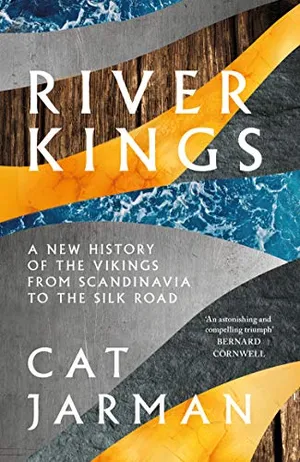
River Kings
Follow bioarchaeologist Cat Jarman and the cutting-edge forensic techniques central to her research as she uncovers epic stories of the Viking age and follows a small Carnelian bead found in a Viking grave in Derbyshire to its origins thousands of miles to the east in Gujarat
Get the latest History stories in your inbox?
Click to visit our Privacy Statement .
A Note to our Readers Smithsonian magazine participates in affiliate link advertising programs. If you purchase an item through these links, we receive a commission.
Joshua Levine | READ MORE
Joshua Levine is a Paris-based freelance journalist. He has written for Forbes and the Financial Times , and is the author of The Rise and Fall of the House of Barneys .
Kate Peters | READ MORE
Photographer Kate Peters grew up in England's Midlands.

Sign Up Today
Start your 14 day free trial today

The History Hit Miscellany of Facts, Figures and Fascinating Finds
Why Did the Vikings Invade Britain?

History Hit
11 apr 2019.

The Viking raids and subsequent settlements define the period known as the Viking Age in Britain, which had profound consequences on the development of the culture, law and language.
The raids started in June of 793 CE when three ships approached the shore by the abbey of Lindisfarne, off the northeast coast of England.
The abbey’s reeve believed they were Norse traders and, thinking they had lost their way, went out to direct them up the coast to the estate he thought they had been aiming for.
Upon approaching the ships, however, he was instantly killed by the sailors, who then sacked the abbey and murdered everyone they found on the island.
But why did the Vikings first come to British shores? What was it about their homeland that made them want to leave and risk crossing potentially deadly seas? And why did some of them eventually decide to settle in the British Isles on a permanent basis?

Anglo-Saxon England was very wealthy…
The clearest cause for the Viking raids was simply the acquisition of wealth. Britain was particularly well known for its lucrative trade centres, and the Scandinavians were aware of this through their own commerce with the region.
Far from targeting Lindisfarne for its religious association, the Vikings would have chosen it for its riches or, as scholar Janet T. Nelson observes, “what lured Vikings was movable wealth”.
The rich gifts given to Lindisfarne – elaborate gospel books and sculptures adorned with expensive paints for instance – were, naturally, unprotected, as the monks had no weapons.
Other religious communities were similar in this respect and so made tempting targets for Viking raiders. The following year Vikings sacked the nearby Monkwearmouth-Jarrow Abbey, once the home of the Venerable Bede.

A page of the Codex Aureus (in Latin ‘Golden Book’). Its text is decorated with gold, silver and coloured ink. During the mid-9th century Vikings seized the Codex Aureus and held it for ransom.
…and this wealth was in easy reach of the sea
The first sites struck were all religious institutions, but that has more to do with convenience than consideration; the abbeys and priories which first fell to the Vikings were located near the coast.
Although the Anglo-Saxon Chronicle gives a January date for the raid on Lindisfarne, other sources make clear it was in June, and this would make sense as the seas would have been calmer and provided greater ease in travel. Lindisfarne Priory’s proximity to the sea made it both an easy and an exceptionally wealthy target.
The Vikings also discovered from their early raids that Britain offered lands that could be cultivated. Consequently many Viking warriors travelled back to Britain with their families to settle down and cultivate the earth.

A painting of Viking daily life. Many Viking warriors returned to Britain’s shores permanently to take advantage of the island’s fertile land.
Early raids encouraged further expeditions
The early raids and the rich plunder they generated encouraged more elaborate military expeditions. In 865 CE the Great Heathen Army under the leadership of Halfdane and Ivar the Boneless arrived in East Anglia in a massive fleet and marched across the land.
In 867 CE the city of York fell, in 868 CE Mercia was raided, and by 871 CE Halfdane had defeated every force sent against him and was so powerful that Alfred the Great had no choice but to pay him an exorbitant amount to leave Wessex.
By 1018, Cnut was proclaimed King of Denmark and united it with Britain under his rule, before then claiming the thrones of Norway and Sweden.

Religion did play a part in these raids. In c. 2300 BCE Germanic-speaking peoples migrated to Scandinavia, bringing with them their religious beliefs in fierce gods who rewarded brave heroes in battle.
By the time of the 2nd-3rd centuries CE, the Norse god Odin had been elevated to a position of supremacy in the pantheon of Scandinavian religion, and Odin would become “the quintessential god of the Viking Age” (Harl, 15).
Odin was the god of war, battle, military victory but also presided over thought, reason, poetry, song, and logic.
Those who followed him devoutly would come to be known as Úlfhéðnar or “berserkers” who fought fiercely in battle without any apparent fear of death. They did so because of their recognition of the gifts Odin had given them in life and their belief in the rewards which awaited them after death.

Woodcut of the image on the Vendel era helmet plate found on Öland, Sweden, depicting Odin followed by a berserker.
According to Norse mythology, these heroes lived on in Odin’s hall of Valhalla, feasting and drinking when they were not honing their martial skills, in preparation for the final cataclysmic battle of Ragnarok, the end of the known world.
Odin wanted only the best warriors for this final engagement with the forces of chaos but also needed as many as he could muster. Proficiency in battle, therefore, became one of the defining and most highly valued skills for the Vikings, followers of Odin.
It would have been considered dishonourable for a warrior to murder unarmed men – as happened at Lindisfarne – but only under certain conditions. One could not kill one’s kinsmen without sound provocation or kill someone who had surrendered in battle (although there is ample evidence of this happening) but this consideration did not apply to those outside of the faith living in other countries.
The religion of the Norse, therefore, encouraged the raids in Britain which brought not only personal wealth and possible earthly fame but also immortality, should one die in battle, and the promise of a place in Odin’s elite army for the battle at the end of the world.
You May Also Like

The Royal Mint: Oliver Cromwell’s Depiction as a Roman Emperor

The Royal Mint: Edward VIII’s Unreleased Coins

A Timeline of Feudal Japan’s ‘Nanban’ Trade with Europeans

Mac and Cheese in 1736? The Stories of Kensington Palace’s Servants

The Peasants’ Revolt: Rise of the Rebels

10 Myths About Winston Churchill

Medusa: What Was a Gorgon?

10 Facts About the Battle of Shrewsbury

5 of Our Top Podcasts About the Norman Conquest of 1066

How Did 3 People Seemingly Escape From Alcatraz?

5 of Our Top Documentaries About the Norman Conquest of 1066

1848: The Year of Revolutions
- History Classics
- Your Profile
- Find History on Facebook (Opens in a new window)
- Find History on Twitter (Opens in a new window)
- Find History on YouTube (Opens in a new window)
- Find History on Instagram (Opens in a new window)
- Find History on TikTok (Opens in a new window)
- This Day In History
- History Podcasts
- History Vault
By: History.com Editors
Updated: May 18, 2023 | Original: November 4, 2009

From around A.D. 800 to the 11th century, a vast number of Scandinavians left their homelands to seek their fortunes elsewhere. These seafaring warriors–known collectively as Vikings or Norsemen (“Northmen”)–began by raiding coastal sites, especially undefended monasteries, in the British Isles. Over the next three centuries, they would leave their mark as pirates, raiders, traders and settlers on much of Britain and the European continent, as well as parts of modern-day Russia, Iceland, Greenland and Newfoundland.
Who Were the Vikings?
Contrary to some popular conceptions of the Vikings, they were not a “race” linked by ties of common ancestry or patriotism, and could not be defined by any particular sense of “Viking-ness.” Most of the Vikings whose activities are best known come from the areas now known as Denmark, Norway and Sweden, though there are mentions in historical records of Finnish, Estonian and Saami Vikings as well. Their common ground–and what made them different from the European peoples they confronted–was that they came from a foreign land, they were not “civilized” in the local understanding of the word and–most importantly–they were not Christian.
The exact reasons for Vikings venturing out from their homeland are uncertain; some have suggested it was due to overpopulation of their homeland, but the earliest Vikings were looking for riches, not land. In the eighth century A.D., Europe was growing richer, fueling the growth of trading centers such as Dorestad and Quentovic on the Continent and Hamwic (now Southampton), London, Ipswich and York in England. Scandinavian furs were highly prized in the new trading markets; from their trade with the Europeans, Scandinavians learned about new sailing technology as well as about the growing wealth and accompanying inner conflicts between European kingdoms. The Viking predecessors–pirates who preyed on merchant ships in the Baltic Sea–would use this knowledge to expand their fortune-seeking activities into the North Sea and beyond.
Early Viking Raids
In A.D. 793, an attack on the Lindisfarne monastery off the coast of Northumberland in northeastern England marked the beginning of the Viking Age. The culprits–probably Norwegians who sailed directly across the North Sea–did not destroy the monastery completely, but the attack shook the European religious world to its core. Unlike other groups, these strange new invaders had no respect for religious institutions such as the monasteries, which were often left unguarded and vulnerable near the shore. Two years later, Viking raids struck the undefended island monasteries of Skye and Iona (in the Hebrides) as well as Rathlin (off the northeast coast of Ireland). The first recorded raid in continental Europe came in 799, at the island monastery of St Philibert’s on Noirmoutier, near the estuary of the Loire River.
For several decades, the Vikings confined themselves to hit-and-run raids against coastal targets in the British Isles (particularly Ireland) and Europe (the trading center of Dorestad, 80 kilometers from the North Sea, became a frequent target after 830). They then took advantage of internal conflicts in Europe to extend their activity further inland: after the death of Louis the Pious, emperor of Frankia (modern-day France and Germany), in 840, his son Lothar actually invited the support of a Viking fleet in a power struggle with brothers. Before long other Vikings realized that Frankish rulers were willing to pay them rich sums to prevent them from attacking their subjects, making Frankia an irresistible target for further Viking activity.
Did you know? The name Viking came from the Scandinavians themselves, from the Old Norse word "vik" (bay or creek) which formed the root of "vikingr" (pirate).
Conquests in the British Isles
By the mid-ninth century, Ireland, Scotland and England had become major targets for Viking settlement as well as raids. Vikings gained control of the Northern Isles of Scotland (Shetland and the Orkneys), the Hebrides and much of mainland Scotland. They founded Ireland’s first trading towns: Dublin, Waterford, Wexford, Wicklow and Limerick, and used their base on the Irish coast to launch attacks within Ireland and across the Irish Sea to England. When King Charles the Bald began defending West Frankia more energetically in 862, fortifying towns, abbeys, rivers and coastal areas, Viking forces began to concentrate more on England than Frankia.
In the wave of Viking attacks in England after 851, only one kingdom–Wessex–was able to successfully resist. Viking armies (mostly Danish) conquered East Anglia and Northumberland and dismantled Mercia, while in 871 King Alfred the Great of Wessex became the only king to decisively defeat a Danish army in England. Leaving Wessex, the Danes settled to the north, in an area known as “Danelaw.” Many of them became farmers and traders and established York as a leading mercantile city. In the first half of the 10th century, English armies led by the descendants of Alfred of Wessex began reconquering Scandinavian areas of England; the last Scandinavian king, Erik Bloodaxe, was expelled and killed around 952, permanently uniting English into one kingdom.
Viking Settlements: Europe and Beyond
Meanwhile, Viking armies remained active on the European continent throughout the ninth century, brutally sacking Nantes (on the French coast) in 842 and attacking towns as far inland as Paris, Limoges, Orleans, Tours and Nimes. In 844, Vikings stormed Seville (then controlled by the Arabs); in 859, they plundered Pisa, though an Arab fleet battered them on the way back north. In 911, the West Frankish king granted Rouen and the surrounding territory by treaty to a Viking chief called Rollo in exchange for the latter’s denying passage to the Seine to other raiders. This region of northern France is now known as Normandy, or “land of the Northmen.”
In the ninth century, Scandinavians (mainly Norwegians) began to colonize Iceland, an island in the North Atlantic where no one had yet settled in large numbers. By the late 10th century, some Vikings (including the famous Erik the Red) moved even further westward, to Greenland. According to later Icelandic histories, some of the early Viking settlers in Greenland (supposedly led by the Viking hero Leif Eriksson , son of Erik the Red) may have become the first Europeans to discover and explore North America. Calling their landing place Vinland (Wine-land), they built a temporary settlement at L’Anse aux Meadows in modern-day Newfoundland. Beyond that, there is little evidence of Viking presence in the New World, and they didn’t form permanent settlements.
Danish Dominance
The mid-10th-century reign of Harald Bluetooth as king of a newly unified, powerful and Christianized Denmark marked the beginning of a second Viking age. Large-scale raids, often organized by royal leaders, hit the coasts of Europe and especially England, where the line of kings descended from Alfred the Great was faltering. Harald’s rebellious son, Sven Forkbeard, led Viking raids on England beginning in 991 and conquered the entire kingdom in 1013, sending King Ethelred into exile. Sven died the following year, leaving his son Knut (or Canute) to rule a Scandinavian empire (comprising England, Denmark, and Norway) on the North Sea.
After Knut’s death, his two sons succeeded him, but both were dead by 1042 and Edward the Confessor, son of the previous (non-Danish) king, returned from exile and regained the English throne from the Danes. Upon his death (without heirs) in 1066, Harold Godwinesson, the son of Edward’s most powerful noble, laid claim to the throne. Harold’s army was able to defeat an invasion led by the last great Viking king–Harald Hardrada of Norway–at Stamford Bridge, near York, but fell to the forces of William, Duke of Normandy (himself a descendant of Scandinavian settlers in northern France) just weeks later. Crowned king of England on Christmas Day in 1066, William managed to retain the crown against further Danish challenges.
End of the Viking Age
The events of 1066 in England effectively marked the end of the Viking Age. By that time, all of the Scandinavian kingdoms were Christian, and what remained of Viking “culture” was being absorbed into the culture of Christian Europe. Today, signs of the Viking legacy can be found mostly in the Scandinavian origins of some vocabulary and place-names in the areas in which they settled, including northern England, Scotland and Russia. In Iceland, the Vikings left an extensive body of literature, the Icelandic sagas, in which they celebrated the greatest victories of their glorious past.

Sign up for Inside History
Get HISTORY’s most fascinating stories delivered to your inbox three times a week.
By submitting your information, you agree to receive emails from HISTORY and A+E Networks. You can opt out at any time. You must be 16 years or older and a resident of the United States.
More details : Privacy Notice | Terms of Use | Contact Us

5 key Viking discoveries in Britain – and what they reveal about how the Vikings really lived
Brutal berserkers. Blood-splattered raids. Barbaric acts of war. These are the aspects of Viking culture and mythology that have dominated our collective imaginations for centuries. But focusing solely on these tropes does not paint the full picture of what life was really like for these early medieval people who hailed from Scandinavia. There is so much more to understand about the Vikings than violence and pillaging – as these discoveries and research projects from around Britain demonstrate…

- Share on facebook
- Share on twitter
- Share on whatsapp
- Email to a friend
With their fearsome appearance and even fiercer reputations, it’s easy to see why the Vikings have intrigued the British public and academic world over the years. In recent years, the popularity of series such as Michael Hirst’s TV drama Vikings has propelled these sea-faring Scandinavians even further to the forefront of our collective imagination – enticing both old and young alike. Their distinctive garb is a continuous favourite of cosplayers and fancy-dress fanatics (although a true historical reenactor worth their salt will know that adding horns to a Viking costume is woefully historically inaccurate!)
It’s clear that Vikings hold a special place in our hearts. But what do we know about how they really lived their lives? These five remarkable Viking discoveries in Britain offer some insight…
The 1976–81 Coppergate excavation, York
Where evidence suggests the Vikings may have converted to Christianity much earlier than previously thought
The discovery of a ‘lost Viking city’ beneath the streets of York made headlines around the world in the 1970s. Archaeological finds from the Viking age had previously been discovered here largely by chance – but this all changed when the city council proposed redevelopment in Coppergate, one of the city’s medieval streets. A small dig led by York Archaeological Trust had already highlighted that the area had remarkable archaeological potential – and they weren’t wrong. Within a few days of the Coppergate redevelopment work, rare traces of Viking buildings were being uncovered.
A large-scale excavation site was soon set up. Between 1976 and 1981, a team of 12 professional excavators and dozens of amateur archaeologists unearthed a mammoth 40,000 artefacts from the site. Among the discoveries were five tons of animal bones, thousands of Roman and medieval roof tiles, and a quarter of a million pieces of pottery.
More like this

So what did the finds tell us about Viking life in early York?
One fascinating find suggests that the Vikings converted to Christianity relatively early on in their settlement of Britain. We know that the first Vikings to arrive in Britain worshipped pagan Norse gods, however the remnants of a medieval Viking-era church in Coppergate suggest that they may have adopted Christianity fairly early on.
Other notable finds from the Coppergate excavations highlight the truly global influence of the Vikings, with objects found during the excavation coming from Norway, the Rhineland, the Baltic, Uzbekistan, and the Red Sea.
Global Vikings
Although the Coppergate dig has long since concluded, its artefacts are available to view in a heritage experience that aims to replicate what the original Viking settlement – Jorvik – looked like.

Cuerdale Hoard, Lancashire
A hoard of treasure that hints at the Vikings’ global activities
The Cuerdale Hoard, a trove of silver discovered more than 150 years ago, is considered the largest Viking treasure ever found in England. It was discovered in 1840, when workmen in Lancashire stumbled across a lead chest while working to repair the embankment of the River Ribble at Cuerdale, near Preston.
Containing more than 30kg of bullion and an impressive c7,000 coins, the hoard is notable for highlighting the international scale of Viking activity. It is thought to have been deposited around AD 905, with its contents being traceable to places including Ireland, the Middle East and the Frankish kingdom (modern-day France).

Silver was common currency in the Viking world – and the Cuerdale Hoard represents astonishing wealth (even by modern standards). There are a variety of theories about its purpose; a notable one suggests that it was a war chest collected by Vikings who had been expelled from Dublin. The Ribble Valley was a main route between Viking York and the Irish Sea, and some experts think that the treasure might have been part of a plot to reoccupy Dublin from a base on the estuary.
Why did the Vikings hoard treasure?
There have been numerous hoards unearthed in britain that date from the viking age – but why did people at this time engage in this behaviour here are the main theories….
- Religious reasons – One line of thinking suggests that people believed they might take any treasure they were buried with into the afterlife, rather like how the Egyptian pharaohs took items of value (and people!) into their sarcophagi and tombs.
- Display of power – Stockpiling treasure may have been the equivalent of saving money in a bank account. It would be handy to draw on this wealth at a later date, perhaps to dish out as handouts to keep questionable ‘friends’ on side – or to mitigate a threat from an enemy
- Pirate-like hoarding – Sometimes it might have been necessary for a Viking to hide their wealth for various reasons, with the intention that it would be collected later when it was safe to do so. Conversely, threats of Viking raids may have provoked others into hiding their treasures, too.
The Watlington Hoard, Oxfordshire
Where a rare coin highlights the alliance of two rulers as equals
A more recent discovery that has added to our understanding of Viking culture is the Watlington hoard. The astonishing collection of Viking silver was unearthed by amateur metal detectorist James Mather in a farmer’s field in Watlington, Oxfordshire in 2015. it contains 186 coins (not all of which are intact), 15 ingots and seven pieces of jewellery, and is thought to date to sometime after the battle of Edington (May 878), a decisive victory over the Vikings for Alfred the Great (of Wessex).

Perhaps the most remarkable find among the hoard is the ‘Two Emperors’ penny, of which there are 13 examples. The coins depict two emperors (thought to be Alfred the Great and the lesser-known Ceolwulf, the last king of Mercia) ruling side-by-side. The coins contradict the traditional narrative that Ceolwulf was a ‘puppet of the Vikings’ , offering a potential new understanding of this key timeframe in the Viking story.
“The coins indicate that Alfred and Ceolwulf’s pennies were probably struck in large numbers, too, so this was no fleeting alliance,” explains John Naylor, national finds advisor at Ashmoleon Museum, where the Watlington Hoard is now displayed . “The chances are it was buried by a member of the Viking Great Army as it made that journey to East Anglia. In fact, the hoard may have been part of the peace deal struck between Alfred’s Wessex and Guthrum’s Vikings following the great clash at Edington.”
The Lewis Chessmen, Scotland
A medieval chess set that reveals how the Viking berserkers achieved their otherworldly abilities
Those familiar with the Harry Potter franchise will recognise the Lewis Chessmen from the denouement of the first film, when the three main characters – Harry, Ron and Hermione – battle against a violent life-size chess set that is an enlarged replica of the Lewis Chessmen.
Discovered in the sand-dunes of the Isle of Lewis, part of the Outer Hebrides, in 1831, this hoard of Norwegian chess-pieces is considered one of the most significant archaeological discoveries ever made in Scotland. There are 93 pieces in the Lewis Chessmen collection, thought to be from at least four different chess sets plus some additional games. It is thought that they were made in late 12th or early 13th-century Norway, but no one knows for definite who they belonged to. One theory suggests that the pieces – made of intricate walrus ivory and whale tooth – were carved in Sk ál holt, Iceland by Margret the Adroit, a priest’s wife who was considered “the most skilled carver” in the country.

Unlike the other discoveries in this list, the Lewis chessmen do not date from the Viking period specifically. However the chessmen are worth noting for how they pay homage to Viking culture, with the rook taking the shape of a Viking berserker , a legendary type of Viking warrior who was associated with the god Odin and said to have fought in a trance-like fury.
Tales of berserkers and their epic exploits frequent sagas and skaldic poems composed at the courts of Scandinavian and Icelandic leaders during the Viking and Middle Ages. But did such warriors really exist? Yes – according to historian Kim Hjardar:
“The description of ‘berserkers’ and ‘wolfskins’ in the sources is on the boundary between fantasy and reality, and it is difficult for us today to imagine that such people can have ever existed, possessed of incontrollable destructive power. But they did. The berserkers and the wolfskins (also known as ‘heathen wolves’) were a special group of very skilled and dangerous warriors associated with the god Odin,” he wrote in a 2016 article for HistoryExtra .
Possible explanations for their unearthly abilities range from eating psychedelic mushrooms to psychological dissociation, which allowed the individual to lose control of their actions. The Lewis Chessmen warrior is particularly fascinating because he is shown biting down on his shield – which some believe to be part of a pre-battle Berserker ritual that enabled them to achieve a trance-like state.
The Repton warrior, Derbyshire
A Viking burial that suggests raiding was a family business
Not a great deal is known about the ‘Repton warrior’, but what is certain is that he met a grisly end; the Viking man was found in the 1980s with a cut to his leg that is thought to have severed his penis. Dubbed “England’s best-known Viking burial” by historian Cat Jarman in a recent issue of BBC History Magazine , the body of the ninth-century warrior was found side-by-side with another, younger man in the Derbyshire village of Repton in the 1980s.
Possible theories about the identity of the two men have varied over the years; initially it was thought that the younger of the two was the Repton warrior’s weapon bearer (killed, perhaps, to assist his master in the afterlife). More recently, however, DNA analysis has revealed that the pair were first-degree relatives, giving credence to a theory that they were leaders of the Great Army that terrorised England in the 860s and 870s. As Cat Jarman surmises: Viking raiding could be “a family business”.
Read more about the Vikings here

Receive a hardback and signed copy of a book of your choice when when you subscribe for £24.99 every 6 issues.
+ FREE HistoryExtra membership - worth £34.99!
Sign up for the weekly HistoryExtra newsletter
Sign up to receive our newsletter!
By entering your details, you are agreeing to our terms and conditions and privacy policy . You can unsubscribe at any time.

Subscriber today and get your Summer Read
+ FREE HistoryExtra membership

USA Subscription offer!
Save 76% on the shop price when you subscribe today - Get 13 issues for just $45 + FREE access to HistoryExtra.com

HistoryExtra podcast
Listen to the latest episodes now

How Long Did It Take The Vikings To Sail To England?

Last Updated by
Daniel Wade
June 15, 2022
The Vikings were well known not just for their boat-building skills but also for their long and mostly successful voyages. As skilled sailors, they were able to reach faraway lands using their famed longships. But how long did it take them to sail to England? Well, let's find out.
Although the Vikings gained a reputation of being invaders, barbarians, predators, and bloodthirsty warriors, their achievements go far beyond raiding and plundering their neighbors. Well, they were capable sailors; something that enabled them to travel far and wide. From Greenland to the Americas to the Caliphate in Baghdad, the Vikings were great sailors who could traverse the oceans to faraway lands. But even with that, the Vikings seemed to have a special attraction to England. With that in mind, you've probably been asking; how long did it take the Vikings to sail to England?
The Vikings' homeland was Scandinavia in what is today Sweden, Norway, and Denmark. To sail to England or northern Britain in particular, it would take The Vikings about 3 to 6 days in good and favorable conditions at an average speed of 8 knots. But in foul weather, the Vikings could delay their departure, run ahead of the storm, or travel at an average speed of 3 knots with numerous stops, which would then mean that they would even take eight weeks if a serious storm blew up.
Let's look at how they did it.
Table of contents
The Viking Ships
Although the Vikings existed in pre-ancient times, their sailboats were highly-advanced, especially at a time when sails were seen as the epitome of great advancement. Their ships were of great importance in making the voyages not just to England but also to other parts of the world.
The most common type of boats was the longships, which were a status symbol and widely regarded as their ultimate weapon. These vessels were elaborately carved and decorated depending on the ship's symbolic value. Their long and narrow shapes made them quick water. This feature, however, meant that they had very limited capacity for cargo and could only accommodate a week's supplies. This, in turn, meant that the Vikings had to increase logistical demands during their expeditions.
But for voyages to England and other faraway places such as Greenland, Iceland, and the Americas, the boats had to be large ocean-going vessels that could carry up to 80 people and a large amount of cargo. The boats were also sturdy and made from planks known as strakes that were held together with iron rivets.
The Importance of Sails to the Vikings
As we noted earlier, sails were one of the most advanced technologies of their days. Without the sails, it could have been extremely difficult for the Vikings to explore across the seas as they did. Sails were invented at the end of the 7th century just before the Vikings began their faraway explorations to areas such as England.
In addition to the oars, the sails meant that the Viking boats were more advanced than other vessels in terms of speed, accuracy, maneuverability, capacity, and seaworthiness. The boats were also designed to tolerate fierce storms and travel far and wide. This gave the Vikings the advantage of traveling not only to England but other parts of the world to trade, make war, and explore.
It's important to note that the Vikings were not only excellent boat builders but were also great sailors. However, all these would count for nothing if they couldn't navigate properly. Unlike today, navigation was no mean task for centuries because there were no maps, no charts, no magnetic compasses, or no sextant for celestial navigation that are common today. If a boat got lost at sea, it would most likely prove fatal.
But to navigate, the Vikings had to use other methods. If they were close to the shores, they'd rely on coastal landmarks. For instance, they relied on how the sun appeared between two specific mountains. The Vikings would rely on signs such as predictable movements of migratory birds. Such signs, however, had very little with how the Vikings managed to sail during stormy or cloudy days but they did it anyway. So how did they do it? Well, the Vikings island-hopped several times on their way to England to be within sight of well-known landmarks such as weirdly-shaped cliffs.
They were also heavily reliant on the initially-noted landmarks such as the sun, clouds, stars, animals, sea mammals, as well as the behavior of winds and waves. In essence, the Vikings had mastered how the seas would behave at any given moment. This enabled them to choose the right time to make the voyage. More importantly, firsthand experience on the route to England or any other place, for that matter, was of great value to the Vikings.
Sailing to England
In the Viking Age, the sailing time for any given stretch was quite variable. The voyage from Scandinavia to England would be quickest but this was largely dependent on whether or not the strength of the wind was moderate and favorable. In most cases, the Vikings would spend many days or even weeks out in the sea if the winds were strong and against them. Such strong winds generally cause high waves and they had to slow down until the sea calmed a little bit before continuing with the voyage.
Again, strong winds and foul weather often meant that the Vikings could lose their bearings and couldn't sail towards their targeted destination. For that reason, the Vikings would stay at a given place for some time waiting for the winds, weather, and the sea to become favorable again. For instance, the Vikings would stay in Fjords for weeks waiting for the winds to become favorable before attempting ocean passing. In such stormy situations, the Vikings would take weeks to reach England if they were lucky to get there in the first place.
When traveling to England in favorable conditions, it would take the Vikings about three days to travel from Roskilde to Norway. With strong winds in the right direction, the Vikings would sail for over 200 miles in a single stretch. The situation would then change in present-day Norway. This meant that they could get stuck on land for at least 10 days, especially if the strong winds were blowing in the wrong direction.
The Vikings would then take a day sailing along the Norwegian Coast and another 36 hours sailing in the open waters from the present-day Bergen to the Orkneys. They would then take a few days on the Scottish coast before getting into the Irish Sea before going down to Northumbria. In most cases, the Viking's travel was slowed by the fact that they moved as a convoy or fleet. They could sometimes move in stages and rally at different points along the way before setting out for England together.
In certain situations particularly when sailing was quite unfavorable, the Vikings would resort to using the oars but this was only for shorter distances. In other words, they couldn't row to England. This, therefore, meant that the only option was to sail when the winds were favorable.
The stiffest test in the voyage often came towards the end, especially if the wind was too much. While the winds off the Isle of Man in Scotland often have moderate winds, things could rapidly change. Under such situations, the Vikings would take the sails down and stop the boats. The idea here was that the stability of their longboats largely depended on how the water flowed over the hull. As such the rudder only became effective when moving forward. This was also important in controlling the boat and preventing it from turning it to the waves or crashing it over.
The Route to England
One of the most important routes for the Vikings was from Denmark to the Mediterranean. This was a completely coastal affair particularly from Denmark to England. They could also sail from western Norway to the Irish Sea or Scotland via Orkney or the Shetland Islands. This route meant that they were only in the open seas for limited stretches. But the longest voyage full of open seas meant sailing directly from Norway to England through the North Sea. This was a deadly adventure so they preferred the Denmark-Mediterranean route, which was more of a coastal affair.
The Importance of the Vikings in Sailing
Sailing was, without a doubt, a pivotal part of the Viking society. In addition to being a more convenient way of traveling in those days, sailing was perhaps the best way that the Vikings could facilitate communication, trade, explore, conquer, and even wedge war. In essence, boat-building and sailing skills enable the Vikings to explore, expand, and have overseas influence. Needless to say, all these would be impossible without their sound sailing skills and seaworthy vessels, which had sails at a time when sails were considered a technological advancement.
With their well-made ships that had sails , the Vikings were able to explore, colonize, and settle in areas such as Greenland, Iceland, and the British Isles. Their vessels were sturdy, quick, and designed with shallow drafts that played a key role in wars. The fact that these boats also used oars meant that the crew could be dropped off just about anywhere, especially when looking to catch the targets unaware.
Related Articles
I've personally had thousands of questions about sailing and sailboats over the years. As I learn and experience sailing, and the community, I share the answers that work and make sense to me, here on Life of Sailing.
by this author
Most Recent

What Does "Sailing By The Lee" Mean?
October 3, 2023

The Best Sailing Schools And Programs: Reviews & Ratings
September 26, 2023
Important Legal Info
Lifeofsailing.com is a participant in the Amazon Services LLC Associates Program, an affiliate advertising program designed to provide a means for sites to earn advertising fees by advertising and linking to Amazon. This site also participates in other affiliate programs and is compensated for referring traffic and business to these companies.
Similar Posts

How To Choose The Right Sailing Instructor
August 16, 2023

Cost To Sail Around The World
May 16, 2023

Small Sailboat Sizes: A Complete Guide
October 30, 2022
Popular Posts

Best Liveaboard Catamaran Sailboats
December 28, 2023

Can a Novice Sail Around the World?
Elizabeth O'Malley

4 Best Electric Outboard Motors

10 Best Sailboat Brands (And Why)
December 20, 2023

7 Best Places To Liveaboard A Sailboat

9 Best Trailerable Sailboats
Get the best sailing content.
Top Rated Posts
Lifeofsailing.com is a participant in the Amazon Services LLC Associates Program, an affiliate advertising program designed to provide a means for sites to earn advertising fees by advertising and linking to Amazon. This site also participates in other affiliate programs and is compensated for referring traffic and business to these companies. (866) 342-SAIL
© 2024 Life of Sailing Email: [email protected] Address: 11816 Inwood Rd #3024 Dallas, TX 75244 Disclaimer Privacy Policy

Vikings’ Voyage to England: How long did it take for the Norse sailors?
Alex Morgan
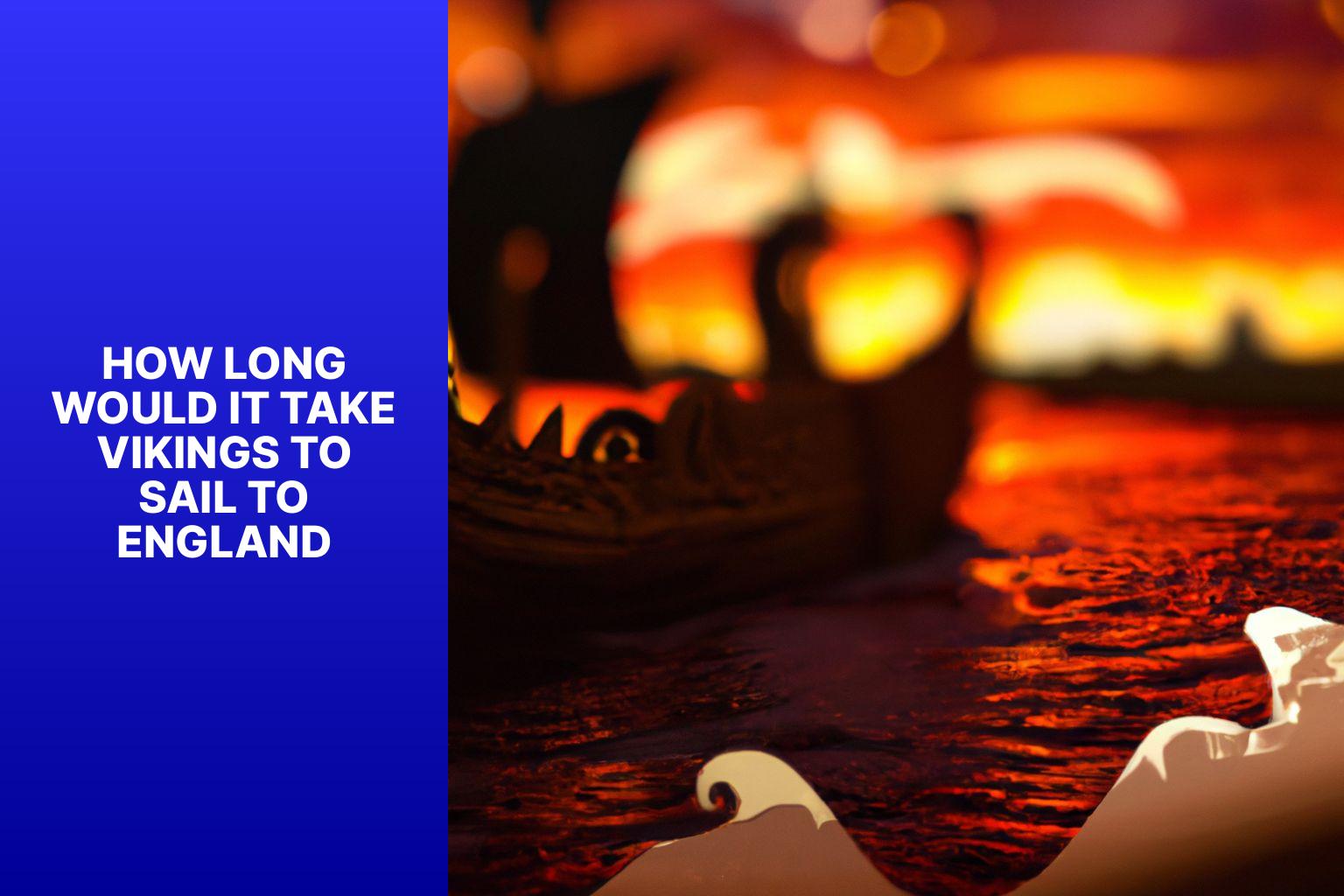
The Vikings were known for their exceptional seafaring abilities, which allowed them to embark on daring voyages across vast distances. To understand how long it would take Vikings to sail to England, we must delve into their routes, methods, and historical accounts.
Routes and Methods of Viking Voyages:
The Journey from Scandinavia to England involves various factors such as distance, geographical considerations, and external influences affecting the duration of the voyage.
Historical Accounts and Estimates are derived from stories, sagas, historical records, and archaeological evidence, providing insights into the experiences of Vikings during their voyages.
Possible Timeframes for a Viking Voyage:
Several factors influenced the duration of these voyages, including weather conditions, navigation techniques, and the size and type of Viking ships used.
By examining the Vikings' seafaring abilities, their routes, historical records, and estimates, we can gain a deeper understanding of how long it would take Vikings to sail to England.
Key takeaway:
- Vikings were skilled seafarers: The Vikings were known for their seafaring abilities, allowing them to undertake long and perilous voyages across the North Atlantic and establish trade routes.
- Voyage duration depended on various factors: The journey from Scandinavia to England involved considering the distance, geographical factors, weather conditions, navigation techniques, and the size and type of Viking ships, which influenced the duration of the voyage.
- Estimation through historical accounts and evidence: Stories, sagas, historical records, and archaeological evidence provide insights into the possible timeframes for Viking voyages, categorizing them into shorter, medium-length, and longer journeys.
The Vikings and their Seafaring Abilities
The Vikings and their seafaring abilities were widely recognized. These skilled seafarers were known for their remarkable navigation skills and exploration of the seas. Advanced shipbuilding techniques allowed them to construct fast and agile longships , which enabled them to cross treacherous waters. With a shallow draft, these ships could easily navigate rivers and open seas alike.
The Vikings further honed their seafaring expertise through celestial navigation , using the sun and stars as guiding tools. Their understanding of tides and currents made navigating coastlines and estuaries effortless. The seafaring culture of the Vikings fostered a sense of adventure and exploration , inspiring them to embark on daring expeditions in search of new lands.
A notable example of their seafaring prowess is the journey of Leif Erikson , who is believed to have reached North America around the year 1000, almost half a millennium before Christopher Columbus. This remarkable feat exemplifies the Vikings’ exceptional navigational skills and their ability to traverse vast distances across the Atlantic Ocean.
Undoubtedly, the Vikings’ seafaring abilities stood out in history as they established trade routes, colonized new lands, and made a lasting impact.
Routes and Methods of Viking Voyages
Norse adventurers sailed across vast oceans, leaving their mark on history through their bold explorations. In this thrilling section, we uncover the secrets of Viking voyages . Brace yourself as we delve into the fascinating sub-sections, shedding light on Norse exploration in the North Atlantic and the resilient Viking trade routes. Prepare to be immersed in tales of oceanic conquest and discover the incredible paths these intrepid seafarers carved through uncharted waters. It’s time to embark on a journey through time and uncover the routes and methods of Viking voyages !
Norse Exploration in the North Atlantic
Norse exploration in the North Atlantic was truly exceptional . The Vikings fearlessly embarked on voyages into unknown territories, broadening their horizons and founding new settlements. They showcased impressive navigation skills , relying on the sun, stars, and natural landmarks to navigate their journeys. Their expeditions led them to destinations such as Iceland, Greenland , and even the shores of North America . Their thirst for land, resources, and trade served as the driving force behind their exploration.
The Norse utilized robust longships that were perfectly suited for the unpredictable Atlantic Ocean. These sturdy vessels allowed them to navigate treacherous waters , thereby enabling them to discover new lands and establish thriving communities.
The Norse settlements in the North Atlantic left a lasting impact . They fostered prosperous societies, engaged in trade with other civilizations, and bequeathed a valuable cultural heritage.
Fact: Norse exploration laid the foundation for subsequent European explorers who sought to expand their empires and dominate trade routes.
Viking Trade Routes
Viking Trade Routes were essential for the Vikings’ economic growth and cultural exchange. They used several key routes to expand their networks and establish economic connections. Let’s explore these important Viking trade routes:
1. The Baltic Sea Route: Vikings travelled through the Baltic Sea, connecting Scandinavia with regions like present-day Poland, Germany, and the Baltic States. This route provided opportunities for them to trade furs, amber, and timber.
2. The North Sea Route: The North Sea played a vital role as a trade route for Vikings. It enabled them to reach places such as England, Scotland, and the Netherlands. They engaged in the exchange of commodities like wool, iron, and slaves.
3. The Volga Trade Route: Vikings sailed eastward through rivers like the Volga, connecting Scandinavia with present-day Russia, Ukraine, and the Caspian Sea. This particular route facilitated trade in furs, honey, and weapons.
4. The Silk Road Route: Vikings also made their way to the Silk Road, travelling through present-day Russia, Central Asia, and the Middle East. They actively participated in the vibrant Silk Road trade, exchanging silk, spices, and precious metals.
5. The Mediterranean Sea Route: Vikings ventured southward through the Mediterranean Sea, establishing contact with civilizations such as the Byzantine Empire and the Islamic Caliphates. The Mediterranean Sea route enabled them to trade silver, slaves, and textiles.
These Viking trade routes were crucial for their economic expansion and allowed them to establish contact with diverse regions, contributing to their influence beyond their homelands.
The Journey from Scandinavia to England
Embarking on a voyage from Scandinavia to England was no small feat for the Vikings . The section ahead will shed light on the arduous journey, exploring the distance and geographical considerations crucial to their successful navigation. Brace yourself for insights into the factors that influenced their voyage duration. Get ready to delve into the challenges and triumphs of these daring seafarers as they set sail across treacherous waters towards the land of the Anglo-Saxons .
Distance and Geographical Considerations
When considering Viking voyages from Scandinavia to England, distance and geography played a significant role. These factors influenced the duration and route of the journey, as well as the navigational challenges faced by the Vikings. Here are the key distance and geographical considerations:
– Distance: The distance between Scandinavia and England varied, averaging 400 nautical miles or 740 kilometers.
– Geographical features: The North Sea provided the main route for Viking voyages to England, with its open waters and proximity to Scandinavia and England. Numerous islands and unpredictable weather added complexity to the journey.
– Island hopping: The Vikings used island hopping to navigate the challenging waters. By moving between islands like Orkney and Shetland, they could break up the journey and find sheltered areas along the way.
– Coastline considerations: The shape and characteristics of the English coastline influenced the choice of landing sites. Vikings sought sheltered harbors, estuaries, or rivers that provided protection and opportunities for trade or raiding.
Pro-tip: When studying Viking voyages, understanding distance and geography provides valuable insights into the challenges faced by these seafarers. Explore maps and consider the natural features of the environment to appreciate their remarkable navigational skills.
Factors Affecting Voyage Duration
– The unpredictable weather at sea greatly affects Viking voyage duration. Storms, strong winds, and adverse weather could force the Vikings to seek refuge or wait for favorable conditions.
– Viking navigational skills played a vital role in determining voyage duration. They used stars, the sun, and the moon as guides, and interpreted natural signs to navigate more efficiently.
– The size and type of Viking ships were crucial in determining voyage duration. Larger ships carried more provisions, allowing for longer journeys without frequent stops. Efficient and fast ship designs also impacted voyage duration.
Fact: The Vikings’ knowledge of navigation and their innovative ship designs allowed them to overcome weather challenges, minimizing voyage duration and expanding their reach across the seas.
Historical Accounts and Estimates
Historical Accounts and Estimates dive into the captivating world of Viking expeditions to England. From stories and sagas to historical records and archaeological evidence, we uncover how these seafaring adventurers navigated the treacherous waters and reached their destination. Let’s unravel the tales and discoveries that shed light on the remarkable journeys of the Vikings and gain insights into their remarkable accomplishments.
Stories and Sagas
Stories and sagas played a crucial role in preserving Viking history and culture. These narratives were passed down through generations orally, allowing the Vikings to share their history, values, and heroic deeds. Not only did these stories entertain people during long winter nights, but they also served as a means of educating them about their ancestors and legendary figures. These accounts contained historical events and characters, providing valuable insights into Viking society and customs. Viking stories often intertwined with their mythology and folklore , including tales of gods , goddesses , and mythical creatures, reflecting their spiritual beliefs. The influence of these sagas extended beyond their time, inspiring later literature and resonating with readers across different periods. Through stories and sagas, we gain a profound understanding of Viking culture that goes beyond what historical records and archaeological evidence can provide.
Historical Records and Archaeological Evidence
Incorporating historical records and archaeological evidence into the text, we gain valuable insights into Viking voyages. These records and evidence serve as concrete proof of the seafaring abilities and activities of the Vikings . Excavations of Viking settlements and graves have unearthed numerous artifacts that correspond to their seafaring lifestyle, including tools, weapons, and ornaments. These findings not only provide tangible evidence of their seafaring activities but also shed light on the extent of Viking exploration and trade networks.
In addition to physical artifacts, historical records such as sagas and chronicles recount the tales of Viking voyages in great detail. They offer intricate descriptions of their journeys, including the routes taken, encounters with other civilizations , and the challenges faced. These records enhance our understanding of Viking exploration and the ways in which it impacted the regions they explored.
Archaeology, along with historical records, plays a crucial role in uncovering Viking trade routes . Through the study of the distribution of Viking artifacts in different regions, archaeologists can trace the routes taken by the Vikings in their pursuit of trade and wealth . The combination of historical records and archaeological findings provides us with a comprehensive understanding of Viking voyages and their impact on the explored regions.
By analyzing historical records and archaeological evidence, researchers can piece together the puzzle of Viking seafaring activities. They can reconstruct the timeline and geographical scope of their voyages, as well as identify the factors that influenced their duration and success. Through the lens of historical records and archaeological evidence, we gain a greater appreciation for the accomplishments and legacy of the Vikings as skilled seafarers.
Possible Timeframes for a Viking Voyage
Embarking on a Viking voyage to England was no mean feat, with varying timeframes for different journeys. From shorter expeditions to longer quests, we’ll delve into the possible timeframes Vikings faced during their seafaring adventures. Brace yourselves to uncover the mysteries surrounding the duration of these voyages, as we set sail through the unknown waters of Viking exploration.
Shorter Journeys
Shorter journeys undertaken by Vikings included:
1. Coastal raids: Vikings launched quick raids along neighboring coasts, targeting easily accessible villages and settlements by ship.
2. Exploration of nearby islands: Vikings explored and settled on nearby islands like the Faroe and Orkney Islands, expanding their territories.
3. Trading expeditions: Skilled Viking traders undertook shorter journeys to engage in trade with neighboring regions. They transported goods like furs, timber, and iron in exchange for valuable commodities such as silver, jewelry, and spices.
4. Mercenary expeditions: Vikings offered their services as mercenaries to different rulers or factions, embarking on shorter journeys to gain wealth and prestige.
Fact: Vikings’ expertise in shipbuilding and navigation allowed them to navigate treacherous waters and undertake these shorter journeys with ease.
Medium-length Journeys
Medium-length journeys were a common occurrence during Viking seafaring expeditions. These journeys covered distances ranging from 300 to 1,000 nautical miles. Viking explorers set sail on medium-length journeys for various purposes such as trade, exploration, and colonization. They would navigate along established trade routes or venture into new territories during these voyages. The range of medium-length journeys allowed Vikings to reach destinations like the British Isles , Iceland , Greenland , and parts of mainland Europe.
The duration of these voyages varied, lasting from a few weeks to several months depending on factors such as weather conditions and the size of the ship. Viking navigators used various skills such as observing the sun, stars, and landmarks to navigate during these medium-length journeys . The success of these voyages heavily relied on favorable weather conditions and the adaptability of the Vikings.
Viking ships utilized for medium-length journeys were smaller and more agile compared to those used for longer expeditions. The flexibility of medium-length journeys enabled Vikings to establish trade networks, conduct raids, and make exciting discoveries of new lands.
Longer Journeys
During longer journeys, Vikings navigated challenging conditions and endured extended periods at sea. Meticulous planning and preparation ensured successful outcomes. Resources were carefully managed to sustain the crew throughout the voyage. Sufficient quantities of food supplies, including dried fish, livestock, and grains, were packed to last the entire trip, minimizing the need for frequent resupply stops.
The size and construction of Viking ships were crucial in determining the duration of longer journeys. Sturdy longships withstood harsh weather and navigated open waters with ease. These efficient and swift ships enabled Vikings to cover greater distances in less time.
Weather conditions significantly affected the length of longer journeys. Calm seas and favorable winds expedited the journey, while storms and adverse conditions slowed progress. Vikings relied on navigational skills and knowledge of weather patterns to navigate safely through unpredictable waters.
Exact timelines for longer journeys varied, but estimates range from several weeks to months. Viking crews’ endurance and determination were essential to the success of these journeys, as they faced numerous challenges along the way.
Factors Influencing Voyage Duration
When it comes to the duration of a Viking voyage to England, several factors come into play. We will explore how weather conditions, navigation techniques, and the size and type of Viking ships all contribute to the length of their daring expeditions. So, what role did the unpredictable weather of the North Sea play? How did the Vikings navigate through treacherous waters? And did the size and design of their ships affect their travel time? Join us as we uncover the secrets behind the factors that influenced these epic journeys .
Weather Conditions
Weather conditions, such as wind, storms, sea conditions, seasons, and visibility, played a crucial role in Viking voyages. Vikings needed favorable winds to propel their ships, as strong tailwinds sped up their journey, while headwinds slowed them down or even made sailing impossible. Stormy weather posed risks to Viking ships, so they had to seek shelter to avoid damage or sinking. Rough seas with large waves made navigation treacherous, requiring Vikings to have the skill to maneuver their ships through stormy waters.
Different seasons brought varying weather patterns, and winter voyages were particularly difficult due to freezing temperatures, ice formations, and limited daylight hours. Fog, mist, or heavy rain reduced visibility, making navigation challenging. In such conditions, Vikings relied on their navigational skills and landmarks to navigate safely.
Vikings required extensive knowledge and experience to navigate these weather conditions. They had to plan their voyages around more favorable weather conditions in order to ensure their safety and success.
If you’re planning to retrace the Vikings’ voyages, it is advisable to seek expert advice on weather patterns, prepare for potential storms or adverse weather, and ensure you have the necessary navigational skills and equipment.
Navigation Techniques
Viking navigation techniques involved various strategies for successfully traveling long distances across the seas:
- Vikings used a sun compass, also known as a shadow stick, to determine their sailing direction.
- They relied on recognizable landmarks, such as mountains and islands, as well as the position of stars and constellations, to navigate.
- Vikings estimated their position by measuring their speed and direction of travel, factoring in wind and currents.
- Vikings used polarized light to determine the sun’s position, even when it was hidden behind clouds or fog.
- Viking sailors observed the migration patterns of birds, particularly ravens and terns, as an indicator of nearby land.
Combining these navigation techniques with their knowledge of the seas and different regions, Vikings traversed vast distances with remarkable accuracy.
The Viking Age, from the late 8th century to the mid-11th century, saw a significant expansion of Norse seafaring. Vikings explored the North Atlantic, establishing trade routes, colonies, and even reaching North America. Their skilled navigation techniques and magnificent ships played a vital role in these daring expeditions. Today, we continue to be captivated by their story and admire the bravery and resourcefulness of these ancient mariners.
Size and Type of Viking Ships
When considering the size and type of Viking ships, it is important to note that they were specifically designed for seafaring expeditions, with a focus on efficiency, maneuverability, and durability .
The Viking ships can be categorized into different sizes and types. The smaller ones, called Knarr , were primarily used for trading purposes and had the ability to carry a moderate amount of cargo. With their shallow draft, they were able to navigate rivers and coastal areas efficiently.
In contrast to the Knarr, the Longships were larger and more versatile vessels that were well-suited for both trade and warfare. These long and narrow ships were faster, more agile, and ideal for exploring new territories and launching surprise attacks.
On the other hand, the larger Drekar ships were mainly used for ceremonial purposes. They were adorned with intricate carvings and decorations, serving as symbols of power and authority for Viking leaders.
Understanding the size and type of Viking ships provides valuable insights into their capabilities and voyages. It showcases the mastery of naval engineering by the Vikings and their remarkable ability to navigate through treacherous waters.
For a pro-tip, exploring the different types of Viking ships not only enhances appreciation for their seafaring abilities but also offers a deeper understanding of their historical significance.
Some Facts About How Long Would It Take Vikings To Sail To England:
- ✅ Viking voyages from Denmark to England lasted anywhere from several days to a few weeks. (Source: Our Team)
- ✅ The duration of the journey depended on unpredictable weather patterns, including factors such as strong winds and storms, which could slow down or speed up the voyage. (Source: Our Team)
- ✅ The skill and experience of the Viking crew impacted the duration of the voyage, as seasoned sailors could optimize their routes and make better decisions. (Source: Our Team)
- ✅ Vikings used various navigational methods, such as coastal landmarks, the sun’s position, and the movement patterns of migratory birds, to navigate the seas. (Source: Our Team)
- ✅ Viking voyages to England were challenging and unpredictable due to the unpredictable weather and sea conditions they encountered. (Source: Our Team)
Frequently Asked Questions
Faq 1: how long did it take vikings to sail from denmark to england.
Historically, Viking voyages from Denmark to England took anywhere from several days to a few weeks. The duration varied due to unpredictable weather patterns and strong currents. Factors such as weather conditions, skill of the crew, and favorable winds could impact the journey’s duration.
FAQ 2: What kind of ships did the Vikings use for their voyages?
The Vikings used advanced ships called longships, which were made of sturdy wooden planks held together with iron rivets. These clinker built ships had overlapping planks and shallow drafts, making them fast and maneuverable. They had a limited cargo capacity but could accommodate up to 80 people and a week’s supply of cargo.
FAQ 3: How did the Vikings navigate during their sea voyages?
The Vikings used various navigational methods such as coastal landmarks, the sun’s position, and the movement patterns of migratory birds. They also relied on their knowledge of natural signs and patterns to determine their location and heading. The skill and experience of the crew were crucial in successfully navigating the seas.
FAQ 4: How did bad weather affect Viking voyages?
Bad weather, including strong winds and storms, could significantly prolong Viking voyages. When faced with unfavorable conditions, the Vikings would stop in fjords or other islands, waiting for the weather to improve. The unpredictable weather and sea conditions made the voyage to England challenging for the Vikings.
FAQ 5: What was the historical legacy of Viking voyages?
The Vikings’ mastery of sailing left an indelible mark on history. Their advanced shipbuilding techniques, navigational skills, and daring voyages allowed them to establish trade, communication, exploration, and conquest in regions such as Greenland, Iceland, and the British Isles. Their historical legacy continues to be studied and appreciated today.
FAQ 6: How did sailing contribute to Viking society?
Sailing played a crucial role in Viking society. It enabled them to expand their reach, establish trade networks, and settle in new territories. The Vikings’ expertise in boat building, advanced technologies such as iron rivets, and navigational methods allowed them to navigate the seas and connect with different cultures. Sailing was a fundamental aspect of their civilization.
About the author
Leave a Reply Cancel reply
Your email address will not be published. Required fields are marked *
Save my name, email, and website in this browser for the next time I comment.
Latest posts

The history of sailing – from ancient times to modern adventures
History of Sailing Sailing is a time-honored tradition that has evolved over millennia, from its humble beginnings as a means of transportation to a beloved modern-day recreational activity. The history of sailing is a fascinating journey that spans cultures and centuries, rich in innovation and adventure. In this article, we’ll explore the remarkable evolution of…

Sailing Solo: Adventures and Challenges of Single-Handed Sailing
Solo Sailing Sailing has always been a pursuit of freedom, adventure, and self-discovery. While sailing with a crew is a fantastic experience, there’s a unique allure to sailing solo – just you, the wind, and the open sea. Single-handed sailing, as it’s often called, is a journey of self-reliance, resilience, and the ultimate test of…

Sustainable Sailing: Eco-Friendly Practices on the boat
Eco Friendly Sailing Sailing is an exhilarating and timeless way to explore the beauty of the open water, but it’s important to remember that our oceans and environment need our protection. Sustainable sailing, which involves eco-friendly practices and mindful decision-making, allows sailors to enjoy their adventures while minimizing their impact on the environment. In this…


Norse tattoos to avoid: Problematic Norse symbol tattoos

What is Norse Paganism? An Introductory Guide

Animals in Norse mythology: A guide to Nordic animals

An exhaustive list of Viking god names and their meanings

Did Vikings have beards? A guide to Viking beards

Why did the Vikings invade Britain: 5 reasons why Vikings came and settled in the Anglo‐Saxon Kingdom
Why did the Vikings invade Britain? Today, we’re going to discover how the Viking invasion of Britain unfolded, and explain why they targeted the region in first place. So, if you’re ready, let’s get started…
The Vikings were a group of seafaring warriors from Scandinavia who lived between the 8th and 11th centuries. They frequently left their homes, searching for lands where they could find wealth and settle down. One of their most famous conquests was Britain.
The Vikings were explorers known for raiding, trading and colonising different regions in the world. “Viking” means “a pirate raid” in the Old Norse language.
The Vikings left their homelands in Scandinavia to search for other lands where they could settle. They farmed, kept animals and grew crops and needed to look for fertile pastures where they could sustain themselves.
They travelled great distances in their longboats to trade goods and purchase silks, silver, wine, spices, glass, pottery and jewellery and bring them back to their villages.
The Vikings left behind very little information about themselves. We know about them from the writings of people in Asia, the Middle East and Europe that had encountered them. We also get a glimpse into their life through poetry, saga, treaties and archaeology.
Some accounts painted them as ruthless warriors who came down to the shores of new countries and fought with the locals, stole from churches and burned buildings to the ground.
Other stories depict them as peaceful settlers skilful at craft, boat building, metalwork and wooden carving.
Why did the Vikings invade Britain?
To get a better idea of the Viking’s intention to land new territory and what they did in other countries, let’s look at one of their most famous conquests: their invasion in Britain.

What were Viking raids like?
Raiding was an important part of Viking invasions. Boats full of fierce Viking warriors would sail across the seas to find and occupy new lands where they would execute their raids.
Vikings raided to enslave people and steal gold from monasteries. They often sold stolen goods to buy the things that they needed. Raiding was also a way of demonstrating bravery and loyalty to the Viking clans.
Raids were typically carried out during the summer when it was easier and safer to cross the sea from their home in Scandinavia. They would farm the land, grow crops, and raise animals during the rest of the year.
Most of what we know about Viking raids comes from the stories of survivors and not the Vikings themselves. Survivors recollect brutal killings, burning villages to the grounds by the Vikings who arrived in ships shaped like dragons.
In the later phases of the Viking age, instead of raiding and returning home, Vikings would settle in the lands that they raided. Many Viking settlements are found in nearby regions, such as coastal regions and islands in Scotland.
These include the Shetland Islands, Lerwick and Dingwall. Vikings were strategic when it came to how they raided. Raiding parties were usually made up of a small number of boats, each occupied by between 40 to 100 men depending on the size.
But how did the Vikings get to Britain, given the long and treacherous journey they had to embark on? It turns out that Vikings were sophisticated shipbuilders.
The Viking boats, called longboats, were long and narrow and had carvings of serpents and dragons at the front. They were designed to land on the beach so that the Viking raiders could swiftly race towards their targets.
Their sudden attacks were part of their plan to surprise their captives and make it hard for them to fight back. After their raids, they would run back to their boats and flee quickly.
Understanding Viking raids can offer insights on why Vikings came to Britain.
When did the Vikings invade Britain?
The period when Viking raids and ensuing settlements in Britain are known as the Viking Age. It’s a milestone because of the profound impact that Viking culture had on Britain’s law, culture, and language.
If you’re wondering when the Vikings invaded Britain, it’s said to be around June of 793 CE. During the raid, three ships approached and docked at the shore of an abbey in Lindisfarne, off the northeast coast of England.
The abbey’s reeve, Beaduheard, recognized them as Norse traders and thought that they had lost their way.
As he approached their boats to direct them up the coast to the estate, the Vikings instantly killed him and then attacked the abbey and murdered everyone they found on the island.
There were subsequent raids in the monastery of Jarrow in Northumbria in 794 CE. They attacked the monastery of Iona in Scotland in 795 CE and, later that year, sites in Ireland.
The Viking Age in Britain continued through c. 1066 CE, ending with the invasion of the great Norwegian king Harald Hardrada, known as “the last of the Vikings.”
Although the Vikings began as small groups of pirates-like explorers in Britain, they eventually grew into big armies under the skilled military leaders, like Halfdan Ragnarsson and Ivar the Boneless, making it easier for the Vikings to establish communities there.
When Vikings raided and assimilated into Britain, famous rulers like Alfred the Great (871-899 CE) and Edward the Elder (899-924 CE) tried to Christianize the Vikings, who followed the Norse religion.
Their efforts backfired and are said to have increased the ruthlessness of the Viking raids in Britain.

Why did Vikings come to Britain?
Uprooting and migrating to England in the 9th and 10th centuries was no easy feat. Many potential dangers lurked on the British shores, but this didn’t stop the 20,000 to 50,000 Vikings from moving ahead with their conquest and leaving their Scandinavian homeland’s familiar, secure shores.
Initially, the Viking trips to Britain were not as organised and were sporadic. However, the raiding trips became full-blown conquests in later years, when Vikings decided to stay and settle in new lands.
According to the Anglo-Saxon Chronicle of 876, the Vikings “proceeded to plough and to support themselves.”
There are many answers to the question “Why did the Vikings invade Britain?” and why they eventually settled in Britain. Like any other population that migrated to other countries, they were searching for a better life.
Let’s take a look at the specific reasons the Vikings chose to invade Britain and how they moved from primitive plundering to organised military expeditions to acquire new land.
1. Britain was an easy target for the Vikings
The Vikings saw Northern England and Ireland as soft targets that they could easily gain the upper hand. They became aware of this through their previous trade deals with Britain, where they noticed a constant influx of expensive and lavish goods in the region.
The monasteries and churches that were the recipient of these riches were situated in small villages without any soldiers. Their lack of arms and protection meant that they would be unable to defend themselves against the Vikings’ aggressive and ferocious fighting style.
Vikings felt justified attacking religious institutions and killing monks because they were Pagans who worshipped different gods. They simply saw it as an opportunity to gain instant access to riches.
Another reason that the Vikings saw Britain as an easy target was the political instability that pervaded a large part of Europe in the 9th century.
The Anglo-Saxon rulers in England were rivals who were so tied up in their feuding that they lost sight of potential threats like the Vikings.
The Norsemen noticed an opportunity to capitalise on the political tensions and carried out several invasions, eventually acquiring territory from the English rulers.
2. The kingdoms in Anglo-Saxon England were wealthy
The Vikings were always on the lookout for treasure to make them rich. They saw an opportunity to acquire wealth in Britain, which had thriving trade hubs that prospered with lucrative commercial exchanges.
Monasteries in Britain were particularly tempting targets to raid because they housed portable treasures that they could quickly loot and take to their ships, such as sculptures made with expensive paint, gospel books, gold chalices, bowls, plates and crucifixes.
One of the artefacts, called the Codex Aureus (translates to ‘Golden Book’), which was decorated in gold and silver, was held by the Vikings for ransom.
The monasteries were unprotected by the unarmed monks who could not protect themselves. The religious institutions were the first sites they struck because they were located near the coast and were conveniently on the way inland.
Archaeologists believe that the Vikings took this portable wealth back to Scandinavia to build ties with lords and their followers, including communities and maybe marital relationships.
3. Vikings were masters at bribery
British forces were no match to the fighting prowess of the Vikings. The rulers soon realised this and concluded that a better strategy to protect their citizens would be to give the Vikings protection money.
Paying the Norse men seemed to be the best way to avoid putting themselves and their citizens under the threat of facing the brutality of Viking warriors.
They were paid in Danegeld (Dane Gold) which was easy money for the Vikings but a heavy expense for the kingdoms that had to make these concessions.
The Vikings would also keep many of the objects they collected from their plunders in religious sites. Knowing that they were valuable to the locals, they held onto the treasures for ransom.
Items like rare manuscripts and books were priceless and sacred to those aware of their significance. They were willing to pay a hefty amount to have them returned.
An English aristocrat once paid pure gold to the Vikings in exchange for returning the Codex Aureus, a revered religious script.
4. Acquiring more land
Another reason Britain was an attractive target for Vikings is that it had lots of fertile lands that could be cultivated and where they could raise animals.
This was a big motivator for Vikings, who were primarily farmers, to visit and move to Britain with their families and start new settlements.
This is one of the primary reasons as to why the Vikings invaded Britain.
Some historians say that Vikings left Scandinavia because it was overpopulated in the early mediaeval period. This could have been due to the climatic warming followed by the sudden cooling in the region.
Consequently, there was not enough arable land for everyone to share in a Viking family. The oldest son inherited the family land, while the other sons had to find other lands to sustain themselves and their families.
They couldn’t find any prospects in neighbouring places in Denmark, Sweden and Norway.

Did Vikings brush their teeth? The truth about Viking teeth
For this reason, many of them decided to leave their homes and search for greener pastures elsewhere. They soon discovered Britain as a viable prospect.
With rich agricultural lands, a milder climate, and similar surroundings to their home, they offered promising opportunities to start a new life.
The growing population of Viking expats who were familiar with the culture and language in Britain made it easier for future settlers to integrate.
5. The promise of an afterlife in Valhalla
The Norse religion justified the Viking’s raids in Britain based on their interpretation of the mythology. They believed that if they were to die in battle, they were destined for immortality.
Giving up their life was honourable and made them eligible for an afterlife where Valkyries would lead them to the Great Halls of Valhalla. They could join Odin’s army and serve him during the battle at the end of the world on those hallowed grounds.
The Norse god Odin was highly revered in the pantheon of Norse gods. He’s often known as the “the quintessential god of the Viking Age”, and he was associated with battle, war and military victory.
Those who fought in his name had no fear of death because they knew they were proving their worthiness to their god and would be rewarded after their death. In battle, proficiency and courage were the most sought-after qualities that Odin looked for in his warriors.

Why did the Vikings settle in Britain?
Studies estimate that between 20,000-35,000 Vikings uprooted themselves and migrated to England between the 9th and 10th centuries.
Initially, the trips were raiding quests, but after exploring the land and learning about the favourable conditions it offers, they decided that it was safe for them to make the drastic move and bid adieu to their homeland.
It’s not any different from the people who immigrated to Australia and America a couple of hundred years ago, searching for a better life.
Travelling became more accessible as the sailing ships grew larger and more sophisticated in the 9th century, facilitating the Viking’s move to Britain. They also sharpened their military strategy and went from rudimentary hit-and-run attacks to organised crusades using their military prowess.
In Old English, the Viking armies were called “micel” or the Great Heathen Army.
For a young Viking who had no chance of inheriting family land in Scandinavia, the opportunity to instantly own valuable land and become a wealthy farmer was something they could not refuse.
Many of them who settled down in Britain became landowners representing the new English elite.
It was not only Viking men who moved to Britain but women as well. Some men would send a message home to ask their wives and family to join them. The other women moved independently after discovering metal jewellery in Britain.
The women liked to wear necklaces and brooches that fastened their clothes together or as adornments.
What did the Vikings do once they invaded Britain?
The parts of England under Viking control underwent considerable changes after they took over.
Here are some of the things that took place during their reign:
- The Vikings brought their own distinct customs, laws, measurements, place names, crafts and farming techniques.
- While ongoing raids took place in Britain, the Vikings settled down as farmers in some regions of Britain and lived peacefully alongside the Anglo-Saxon locals.
- There were more intermarriages between Vikings and Anglo-Saxons.
- Vikings predominantly settled in three regions in Britain: East Anglia, Northumbria (includes modern-day Yorkshire) and the Five Boroughs. The biggest Viking settlement was Danelaw, a vital trade centre where over 10,000 Norse people lived.
- The Vikings maintained their own government and laws, including a meeting called “Thing”, where members would gather together to deal with problems and make decisions.
- During a Thing, people would vote on issues such as a criminal or ownership sentence, which was overseen by a judge called the “law-speaker.” Viking laws were not documented and were passed down by word of mouth.
- Outlaws were banished to live in the wilderness, and anyone could hunt them down and kill them.
- Vikings held duels called “Holmgang” to settle arguments. The winners were often seen as being favoured by the Gods.

What are the remnants of Viking influence on Britain?
The Viking Age in Britain ended around 1066 B.C.E. By this time, all the Scandinavian settlements in England and Scotland were Christianized, and the Norse pagan religion gradually faded.
What remained of the Viking culture was absorbed into the culture.
Signs of Viking legacy can be found in the remains of the materials they left behind. Archaeologists have excavated burials in various areas in Britain, such as Shetland, Orkney, the Isle of Man, the Western Isles and the northwest of England.
Archaeologists say that whatever they found in the sites was rich in quality and quantity and gave a good idea of their life.
We also see signs of Viking legacy in some vocabulary and in the names of the places they settled in Britain.
The fact that the Scandinavian language was spoken in England for many generations suggests that Nordic women made it a point to pass on the language to their children despite moving to a new part of the world.
So, why did the Vikings invade Britain? They were looking for greener pastures, both literally and figuratively. They successfully created a strong presence in these new lands they called home and left a legacy for future generations to behold and admire.
Scandification: Discovering Scandinavia.

Scandification explores and celebrates the magic of Scandinavia. Stay tuned and we’ll bring the essence of Scandinavia to you.
Advertising enquiries
Scandification explores and celebrates the magic of Scandinavia. To advertise your brand to a global audience, contact our advertising team below.
[email protected]
Subscribe Now
I consent to the privacy policy and terms and conditions .

- Expeditions
- Complimentary Brochures
British Isles & Ireland Cruises
Explore the timeless traditions and extraordinary coastal beauty of Britain and The Northern Isles. Sail the North Sea to the English Channel, enjoying culturally immersive overnight stays in the region's most legendary cities for an unparalleled Viking journey.
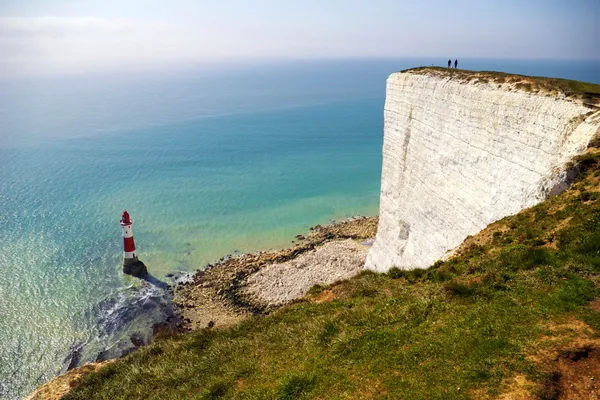
British Isles Explorer
- Request a Quote
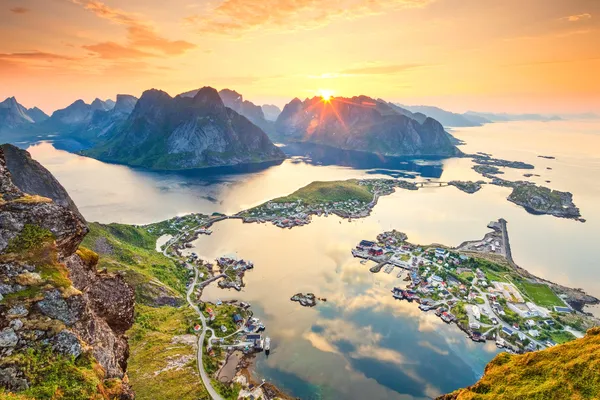
Into the Midnight Sun
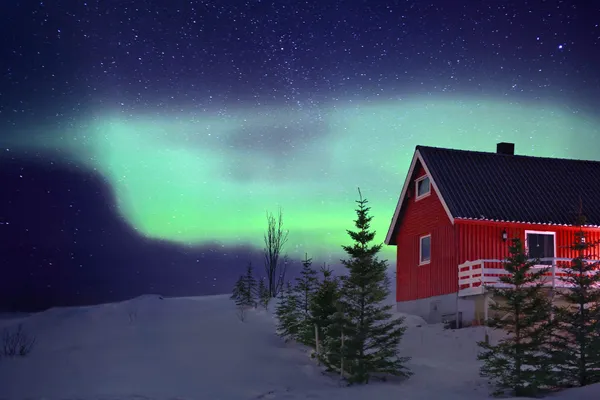
In Search of the Northern Lights

NEW! Iberian & Mediterranean Odyssey
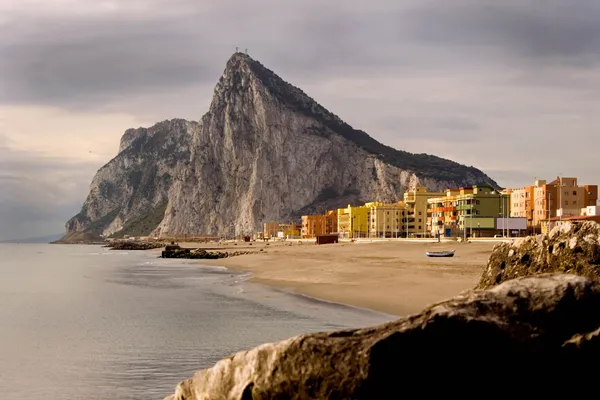
Iceland, British Isles & Iberia
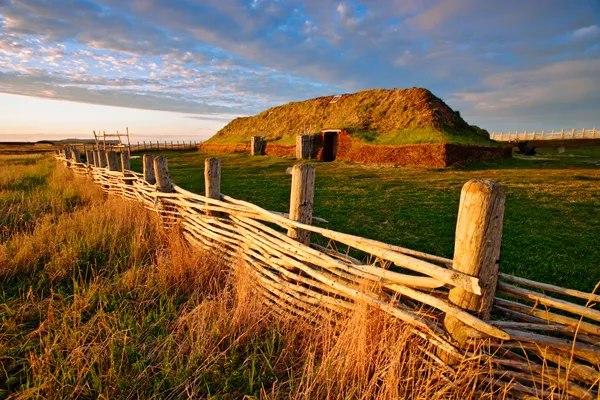
In the Wake of the Vikings
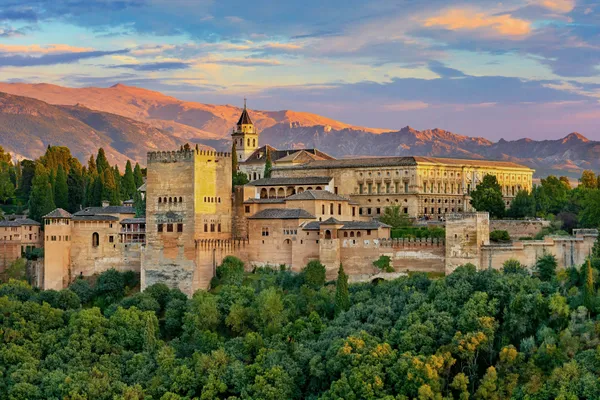
Iberian Explorer
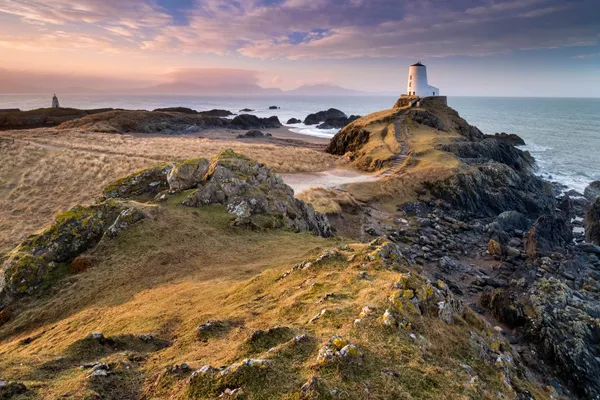
Scandinavia & the British Isles
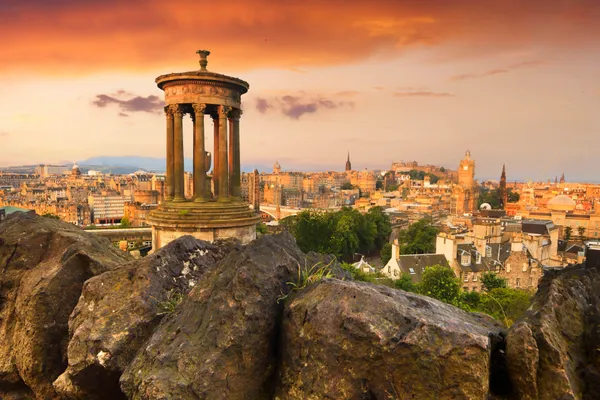
Baltic Jewels & the Midnight Sun
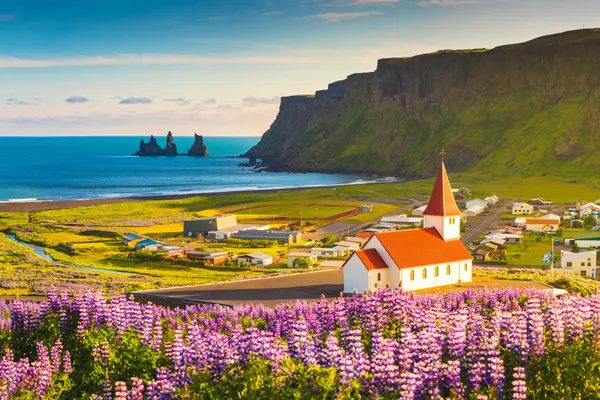
British Isles & Iceland Explorer
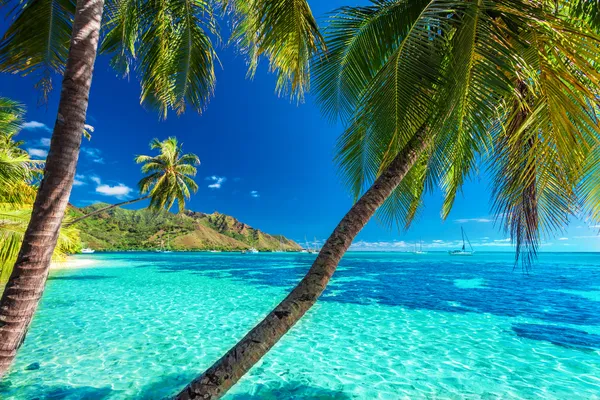
NEW! Viking World Cruise

NEW! Viking World Journeys
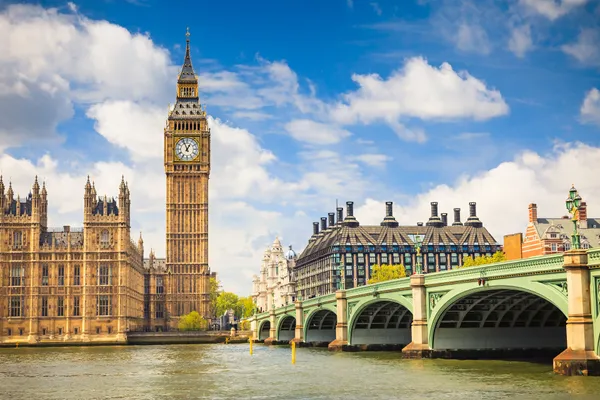
NEW! Viking World Voyage I
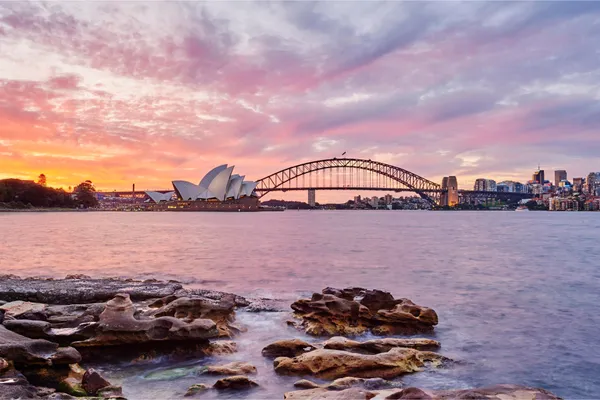
NEW! Viking World Voyage II
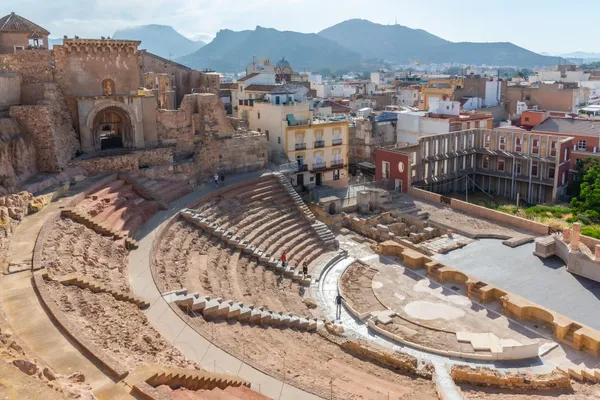
NEW! Mediterranean Discoveries
Highlights of british isles & ireland cruises.
From lush botanical gardens and the mountainous Highlands to romantic castles and secluded islands, discover rich cultures and fascinating maritime history. Viking offers insight into centuries-old traditions and modern life in cities from Belfast to London. Here you can find:
- The history and sophistication of Edinburgh
- The age-old tradition of the Ceremony of the Key at the Tower of London
- Authentic whiskey in an Irish pub
- Delightful, high-spirited Shetland ponies on Scotland’s remote island
- Grand monuments of Northern Ireland’s capital, Belfast
- The historic golf course at St. Andrews
- Liverpool’s music scene and the legacy of the Fab Four
- Freshly baked scones with homemade jam
- Medieval Canterbury, a UNESCO World Heritage Site
- Sir Winston Churchill’s family home at Chartwell
Sign up to receive updates from Viking
Stay current with special offers, news and destination-focused content.
Company Information
- Order a Brochure
- Special Offers
- Sweepstakes
- Travel Advisors
- Media Center
- Investor Relations
- Health & Safety Program
- Privacy Policy
- Cookie Policy
- Manage Cookies
Viking River Cruises
- Mississippi
Viking Ocean Cruises
- Scandinavia
- British Isles & Ireland
- North America
- Caribbean & Central America
- South America
- Mediterranean
- Quiet Season Mediterranean
- Australia & New Zealand
- World Cruises
- Grand Journeys
Viking Expeditions
- Great Lakes
- Longitudinal World Cruises

Welcome to My Viking Journey
If you have a Viking booking number, you now have access to plan & customize your travel experience
Create Account
Do you have an account? Create one today to complete your Guest Information Form, explore shore excursions and access important documents. It is quick, secure and easy.
Facebook login is no longer supported. Facebook login users, please select here for additional information.
Need Help? Please contact us

Still unsure of the email address you used to log in? Please contact us .
First Name *
Last name *, booking number *, agency id *, agent phone number *, important reminder.
You have 1 item s in your shopping cart that still require s payment.
Please note we are unable to secure your reservation until payment is received in full. Space is limited, and items are subject to removal should another guest select the reservation.
Would you like to go to your cart now or pay for your items later?
- All Categories
- DVA Members
- Visitor Attractions
- Religious Sites
- Archaeological Sites
- Battle Sites

Viking Cultural Route
- SHARE PAGE ON:
Loading Please Wait
About the viking cultural route.
Discover the fascinating history of the Vikings on a journey around the Viking Cultural Route
Introduction
The Viking Age was the period from around 800-1050 AD during which Vikings achieved unrivalled boat-building, navigational and seamanship skills that allowed them to travel widely throughout Northern and Western Europe, the North Atlantic, into the Mediterranean and deep into the rivers of Russia and the Ukraine.
At a time when few people travelled, the Vikings raided, traded and settled extensively. They also established important trading centres in places such as Hedeby (Germany), Birka (Sweden), York (England), Dublin and Waterford (Ireland) and Kiev (Ukraine).
Wherever they went, they left a clear legacy behind them, such as can be seen in the remaining traces of their early law courts (known as things); the impact on local place names, language and social structures; their legacies of art and literature; and surviving archaeological sites. Much of the Viking story is recorded in the form of intangible heritage such as the sagas that recount the deeds and travels of the Viking people.
Council of Europe
The Viking Cultural Route is a far-ranging and significant cross-border collection of sites, stories and heritage that represent the shared Viking legacy of Europe and beyond. It is one of the earliest registered cultural routes, having first been certified in 1993. It recognises how, for centuries, the Vikings transmitted culture and traditions throughout the European continent, and this heritage therefore unites the peoples of present-day Europe.
Since 2012, the Viking Cultural Route has been managed by the Destination Viking Association : a network of museums, attractions, organisations and destinations working together to create a borderless tourism destination focusing on the Viking world and preserving, promoting, researching, demonstrating and disseminating Viking heritage.
You can find find the page with all the Cultural Routes by theme here: https://www.coe.int/en/web/cultural-routes/by-theme
There are around 100 sites on the route, including examples of forts, towns, farms, quarries, ships, objects, museums, archaeological remains and reconstructed longhouses. The traveller can discover this fascinating culture on a journey across national borders, while also enjoying a variety of events, such as the popular and widespread Viking markets.
- Hosts and Guests
- Login Register
- Find a Cruise
Discover the history of Britain with Viking Resident Historian Tom Macan
Journey through the past with Ambassador Tom Macan , a Viking Resident Historian and former British diplomat, as he presents an i conic lecture on the “History of Britain.” In addition to being a lecturer, Macan was an a mbassador to Lithuania, d eputy h igh c ommissioner in India and g overnor of the British Virgin Islands. In this presentation , he e xplore s how four nations became one United Kingdom and , subsequently, a global empire—which it later relinquish ed . Delve deeper into Britain’s captivating history as Macan shares his expertise during a question and answer session.
Previous Tuesdays (222)

Previous Livestreams
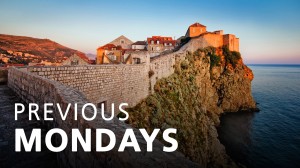
Previous Weeks
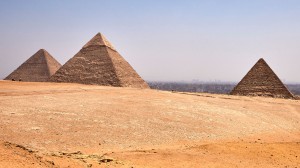
Destination Insights
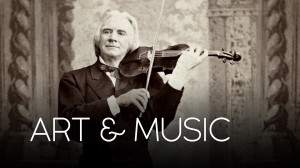
Our Viking Family

The Viking World

Cultural Partners
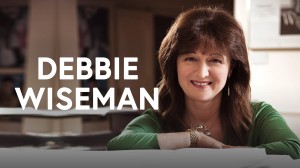
Musical Journeys
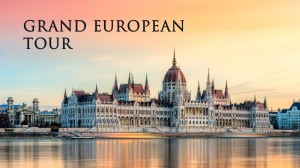
The World of Finse

Ambassador Tom Macan was, as a UK diplomat, ambassador to Lithuania, deputy high commissioner in India, governor of the British Virgin Islands and director of training in the Foreign Office. He is a graduate of Sussex University and a member of the Chartered Institute of Linguists. His interests include history, architecture, ships and international affairs.
Please wait
What do you need help with?
By clicking on Send, you agree to Viking.TV's Terms & Conditions . Our latest Privacy Policy can be found here. The privacy notice tells you what information we collect about you, how we use it, and your related rights.
- Expeditions
- Complimentary Brochures
- Budapest to Amsterdam
- Amsterdam to Budapest
Grand European Tour
- From $4,499
- 12 Guided Tours
- 4 Countries
- Dates & Pricing
- 2024 2025 2026
- Budapest to Amsterdam Amsterdam to Budapest
Grand European Tour Map
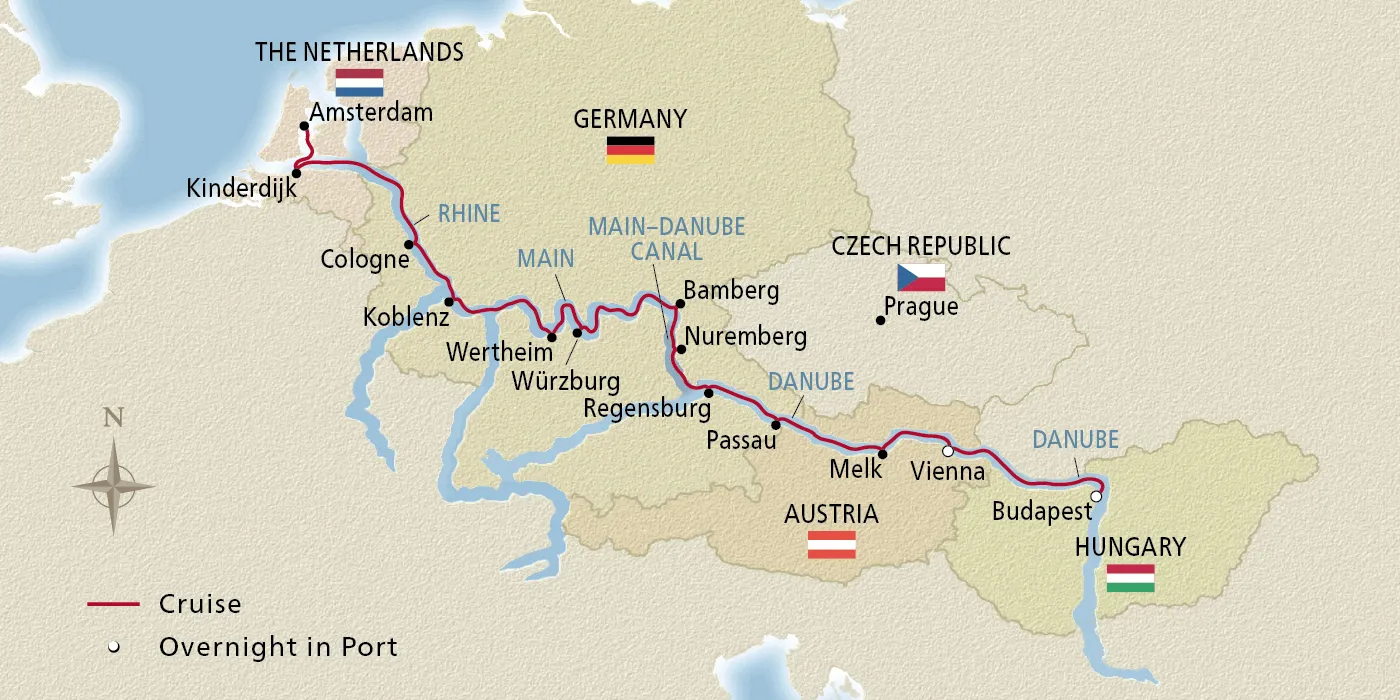
Travel through the heart of Europe

Admire Rhine Valley vistas from a 900-year-old castle. Sample the culinary delights of Austria’s Wachau Valley. Learn the Viennese waltz, visit Melk’s Benedictine Abbey and delve into Nuremberg’s World War II history. Indulge your senses on this 15-day journey spanning the best of Europe, tracing the Rhine, Main and Danube Rivers between the windmill-dotted waterways of Holland and the stunning landscapes of Hungary, with engaging encounters at every bend.
SUMMER SOLSTICE SALE

Viking Inclusive Value
All you need included, with no surprises or hidden fees

To learn more about each port of call and our included as well as optional excursions, click on the individual days below.
Itinerary and shore excursions are subject to change and may vary by departure.
More features, services and excursions included
One complimentary shore excursion in every port of call
Free Wi-Fi (connection speed may vary)
Beer, wine & soft drinks with onboard lunch & dinner
24-hour specialty coffees, teas & bottled water
Port taxes & fees
Ground transfers with Viking Air purchase
Visits to UNESCO Sites
Enrichment lectures & Destination Performances
Your Stateroom Includes:
River-view stateroom
Bottled water replenished daily
110/220 volt outlets
Queen-size Viking Explorer Bed (optional twin-bed configuration) with luxury linens & pillows
Private bathroom with shower, heated floor & anti-fog mirror
Premium Freyja® toiletries
Plush robes & slippers (upon request)
40" or 42" flat-screen Sony® TV with infotainment system featuring Movies On Demand, plus CNBC, CNN, FOX & more
Telephone, safe, refrigerator
Individual climate control
*All amenities on board Viking Longships; amenities vary on other ships.
Pre & Post Cruise Extensions
More days means more to discover, with extension packages you can add before or after your Viking cruise or cruisetour. Enjoy additional days to explore your embarkation or disembarkation city, or see a new destination altogether with a choice of exciting cities. Pre & Post Cruise Extensions vary by itinerary and are subject to change.
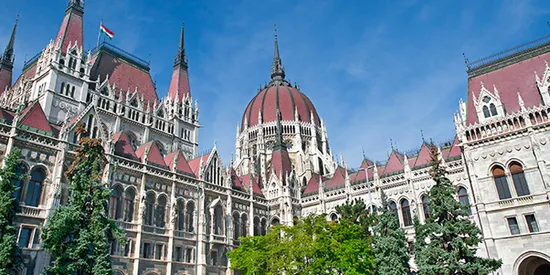
Pre: Budapest
From $649 | 2 Nights
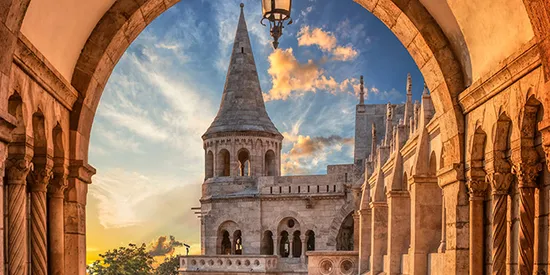
Pre: Budapest Premium
From $1,299 | 2 Nights

Pre: Prague
From $949 | 3 Nights

Pre: Prague Premium
From $1,249 | 3 Nights
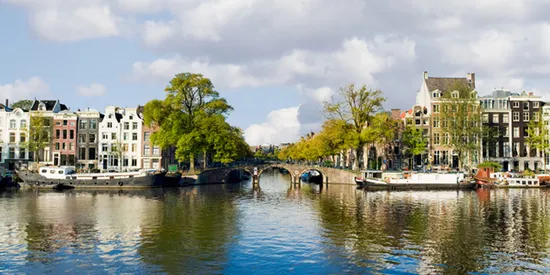
Post: Amsterdam
From $749 | 2 Nights
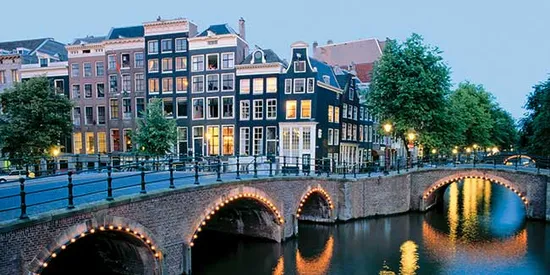
Post: Amsterdam Premium
From $1,249 | 2 Nights
Sign up to receive updates from Viking
Stay current with special offers, news and destination-focused content.
Company Information
- Order a Brochure
- Special Offers
- Sweepstakes
- Travel Advisors
- Media Center
- Investor Relations
- Health & Safety Program
- Privacy Policy
- Cookie Policy
- Manage Cookies
Viking River Cruises
- Mississippi
Viking Ocean Cruises
- Scandinavia
- British Isles & Ireland
- North America
- Caribbean & Central America
- South America
- Mediterranean
- Quiet Season Mediterranean
- Australia & New Zealand
- World Cruises
- Grand Journeys
Viking Expeditions
- Great Lakes
- Longitudinal World Cruises

Vikings Season 6 Ending Explained: Ragnar's Sons & Kattegat's New Ruler
- The ending of Vikings closed the story of Ragnar Lothbrok and his sons with shocking developments and deaths.
- Ubbe fulfills Ragnar's dream by adventuring to the New World, while Ivar and Hvitserk face internal struggles and adopt new paths.
- Vikings ends with Ingrid as queen of Kattegat, bringing the show's core themes of faith and exploration full circle.
After 6 seasons, the Vikings ending brought the story of Ragnar Lothbrok and his sons to a close, though not without throwing in a few last-minute shocking developments (and, of course, deaths) The final season was split into two halves, and Vikings season 6b opened with the death of Ragnar's firstborn son, Bjorn Ironside, after leading the Norwegian army to victory against the invading Rus. Bjorn's half-brothers, Ivar the Boneless and Hvitserk, had fought on the side of the Rus during the invasion, and were left at a loose end after helping to secure a new leadership to the east.
While Ivar and Hvitserk left the Rus and went back to their old raiding ways before the end of Vikings , Ubbe sought to fulfill a different part of Ragnar Lothbrok's legacy by adventuring across the vast ocean to the west in search of a promised "Golden Land." Following a harsh journey, Ubbe finally reached the New World at the end of Vikings — and discovered that it was already inhabited. However, Ragnar's sons weren't the only characters in the show, and the Vikings ending spent just as much time showing what lay in store for Kattegat after the finale.
Vikings is available to stream on Amazon Prime Video and Hulu
All 6 Vikings Seasons, Ranked Worst To Best
Ubbe's settlement in north america, ragnar's most pragmatic son headed west at the end of vikings.
The ending of Vikings saw Ubbe finally fulfill his goal of traveling west and reaching the "Golden Land". Though Vikings viewers may think that the shot of a soaring eagle after Ubbe's arrival in the "New World" means he's reached the USA (or rather, the land that will eventually become the USA), he and his settlers actually arrive in Northeastern Canada. Ubbe's arrival in the west may not have happened in real life, but his story serves as both a fulfillment of Ragnar's dream of exploration, and as a foreshadowing of the colonization of the Americas by European explorers.
When asked by Othere what he sees when he looks at the new world at the end of Vikings , Ubbe replied excitedly that he sees farming land, minerals for mining, " rivers, ports, construction, abundance. Everything that Ragnar dreamed of. " Troubled by this, Othere points out the flaw in Ubbe's thinking:
" You discover a new land, but you behave in the same ways as you did before. And then it becomes just like the land you left behind ."
Sure enough, behaving in the old ways soon damages the relationship between Ubbe's settlers and the native Mi'kmaq tribe. After they receive a gift of a small lump of gold, a Norse settler called Naad grows greedy for more and searches the Mi'kmaq's camp for it — murdering the Sagamaw's son, Peminuit, when he's caught. Ubbe decides to punish Naad by executing him via a blood eagle, but in the end simply cuts his throat.
It wouldn't be surprising if he ultimately decided to adopt the Mi'kmaq's ways, rather than attempting to forcibly colonize his new world for the Norse.
Though he kills Ubbe quickly as an act of mercy, knowing that Naad would never be able to stay silent through the torture and earn his place in Valhalla , but can also be interpreted as Ubbe deciding to leave the old ways behind him. Ubbe has always been the most pragmatic and level-headed of Ragnar's sons, and previously converted to Christianity to secure a truce with King Alfred in England. It wouldn't be surprising if he ultimately decided to adopt the Mi'kmaq's ways, rather than attempting to forcibly colonize his new world for the Norse.
As far as historical records show, Norse explorers didn't reach North America until Leif Erikson's arrival in the 11th century . However, based on the presence of Mi'kmaq natives and the fact that Ubbe's boats travelled from Greenland, it can be assumed that they ended up in the area that would later be dubbed "Vinland" by Leif Erikson, and eventually dubbed Newfoundland by King Henry VII in the 15th century.
Vikings True Story: Did Ubbe Really Explore North America?
How (& why) floki came to the new world, the master boat-builder only found sadness in iceland.
To Ubbe's surprise, he found an old friend waiting for him in the new world: Floki, who returned for the Vikings ending. The last time viewers saw the giggling boat-builder, he was seemingly crushed in a cave-in after discovering to his maddening dismay that Christians had beaten him to Iceland, which he'd once believed to be Asgard — the home of the Norse gods.
Floki's own new world fell apart when the settlers he persuaded to come to Iceland descended into in-fighting and murder
Floki's own new world fell apart when the settlers he persuaded to come to Iceland descended into in-fighting and murder, culminating in the suicide of Kjetill's sweet-natured daughter, Aud. When asked why he left Iceland and travelled west, Floki simply replied that the sadness came to be too much for him. With his memories having become muddled in places, Floki doesn't offer many details about how exactly he made the epic journey, saying only that he " found a boat ."
As set-up for Floki's return prior to the ending of Vikings , it was mentioned earlier in season 6 that he was the greatest boat-builder of all the Vikings, and that his boats sailed smoothly through the waves. If he actually build the boat that he claims to have found, then Floki's journey may well have been easier than Ubbe's.
As he approaches death at the end of Vikings , Floki finally seems to have found peace.
The return of Floki reveals just how much he has changed from the man he was in Vikings season 1. Whereas he was once devoted to the Norse gods and very opinionated about how Ragnar should honor them, Floki's blind faith seems to have been shattered by his discovery of the Christian cross in a cave in Iceland. He shies away from giving advice, even when Ubbe directly asks for it. As he approaches death at the end of Vikings , Floki finally seems to have found peace.
As with Ubbe, Floki's journey to North America is fiction (though a real-life Viking called Floki was among the first of the Northmen to travel to Iceland).
Vikings: 10 Most Shocking Parts Of The Final Season
Ivar the boneless dies in battle, ragnar's youngest son embraced his end in the vikings finale.
Ragnar Lothbrok's youngest son, Ivar the Boneless, had perhaps the most interesting arc by the time Vikings ended. His legend started before he was even conceived, with his mother — Ragnar's second wife, Aslaug , who experienced visions of the future — warning her husband that he needed to wait three days before consummating their marriage, or their child would be monstrous. Ragnar ignored her, and a difficult pregnancy followed that culminated in a baby born with deformed legs.
Ivar was left to die in the woods by Ragnar, but after being rescued by Aslaug, he eventually grew up to be a favorite among Ragnar's sons, accompanying his father on his final journey to England. Ivar killed for the first time when he was still a child, hitting another boy in the head with his hatchet in a fit of anger. Later, he killed his own brother, Sigurd Snake-in-the-Eye, for mocking Ivar's apparent impotence.
Ivar declared that he was not simply descended from the gods, but an actual god himself.
If each of Ragnar's sons represents a different facet of his personality, Ivar embodies the part of Ragnar that hungers for violence and war. This came to a head when he became the king of Kattegat, and Ivar declared that he was not simply descended from the gods, but an actual god himself. In a short period of time, however, Ivar lost first his son, and then his rule over Kattegat, and his beloved wife Freydis, whom he strangled after learning that she'd betrayed him as revenge for the death of Baldur .
Though he attempted to take back Kattegat with Prince Oleg, Ivar's story in season 6 was largely one of introspection and even redemption. He became a father figure to Igor, fathered a biological child with Katia, and when conflict loomed on the horizon on Kattegat, he avoided a struggle for the throne by suggesting that he, Hvitserk, and Harald invade England instead.
Ultimately, like Ragnar, Ivar welcomes his death.
Ultimately, like Ragnar, Ivar welcomes his death. Despite the sclera of his eyes being very blue (a sign that he is in heightened danger of breaking his bones) he wades into the final battle against King Alfred's army and allows a soldier to fatally stab him in the stomach. In addition to securing an appropriate death for one of the greatest Vikings who ever lived, Ivar's decision to die also seems to be out of love for Hvitserk.
As he watches his brother ruthlessly kill people on the battlefield, Ivar experiences flashbacks to their life together. Perhaps he realized that as long as he lives, Hvitserk will always follow him into battle and will never know peace, and so Ivar chose to die so that the fight would end and Hvitserk would have a chance for a better life.
Vikings: 10 Things You Didn't Know About Ivar
Why hvitserk converted to christianity (& changed his name to athelstan), after a life being overshadowed, hvitserk found purpose away from kattegat.
If each of Ragnar's sons had an ending that pays tribute to their father — Ubbe fulfilling his dream of exploration, and Ivar his love of battle — then Hvitserk's ending in Vikings is a nod to Ragnar's love of Athelstan, and his curiosity about the Christian god. From the moment Athelstan's monastery was raided in Vikings season 1, and he was taken captive, the monk was an object of fascination for Ragnar, and eventually came to be his closest friend and adviser.
Even after Athelstan was murdered by Floki, he remained as a presence in the show
Even after Athelstan was murdered by Floki, he remained as a presence in the show — sometimes appearing to characters as a vision, and later manifesting spiritually in Othere, the wanderer who guided Ubbe to the "Golden Land," who claimed that he was once a Christian monk called Athelstan. Of course, Athelstan's most persistent presence in Vikings was through his son, King Alfred the Great, who faces Ivar and Hvitserk in season 6's final battle.
When Ivar is killed in battle, Alfred calls for a halt to the fighting so that Hvitserk can mourn his brother's death, and the invasion more or less fizzles out there. It's unclear whether Hvitserk was more of a guest or a prisoner in the days that followed (perhaps a bit of both), but when he's next seen his beard has grown out to indicate the passage of time. He converts to Christianity at the end of Vikings, and Alfred seals his conversion by changing his name from Hvitserk to Athelstan.
Hvitserk struggled more than his brothers in his search for greatness — never becoming a feared warrior like Bjorn, an adventurer like Ubbe, or the ruthless ruler that Ivar was.
Hvitserk struggled more than his brothers in his search for greatness — never becoming a feared warrior like Bjorn, an adventurer like Ubbe, or the ruthless ruler that Ivar was. By the end of Vikings , Hvitsekr/Athelstan had never married or had children, and both of the women he loved have died. He spent most of his life following after Ubbe or Ivar, and with both of them gone, he has nothing left to return to in Kattegat after Vikings finished. Hvitserk's expression is inscrutable during his baptism, but it's implied that some sort of deal was made when Alfred tells him:
" You entered here as a pagan, and you will leave here as a Christian Saxon prince ."
Vikings: 10 Things You Didn't Know About Hvitserk
Queen ingrid rules over kattegat, none of ragnar's offspring became the new leader.
Somewhat surprisingly, Vikings does not end with a son of Ragnar as the king of Kattegat.
The throne of Kattegat has held many different rulers, but somewhat surprisingly, Vikings does not end with a son of Ragnar as the king of Kattegat. Instead, Bjorn's second wife Ingrid — carrying a child that could be either Bjorn's or Harald's — declares herself the new queen after Harald is killed in the raid on Wessex (similar to how Aslaug became queen after Ragnar's death) . Some viewers expressed disappointment that a newer character ended up ruling Kattegat, but Vikings never had a fixation upon which character will "win" in the same way that, for example, Game of Thrones had.
A lesser-known character only related to Ragnar through marriage ending up on the throne of Kattegat can also be seen as another way of respecting Ragnar's memory.
A lesser-known character only related to Ragnar through marriage ending up on the throne of Kattegat can also be seen as another way of respecting Ragnar's memory. The legendary warrior was never very interested in being a king, and only became the ruler of Kattegat because his hand was forced by Earl Haraldson. Ragnar didn't want to be tied down to Kattegat, so it makes sense that his sons would also move on. E ven as she says " Long live the Queen ," Ingrid seems troubled — perhaps because she knows the rulers of Kattegat don't tend to live very long.
Was Ingrid A Witch? What Vikings' Real Life History Reveals
The real meaning of vikings' ending, the finale brings the show's core themes to a head.
The second half of Vikings season 6 brought the show's story full-circle, with Ubbe's storyline recalling Ragnar's desire to discover new land, while Ivar and Hvitserk once more returned to raid England. Though Vikings has frequently strayed from historical accuracy , the series has covered in broad strokes the first few decades of the Viking age in England, and the season 6 finale foreshadows the end of that age with the detail that a Danish king has converted to Christianity and forbidden worship of the Norse gods.
The final scene at the end of Vikings is Ubbe and Floki sitting on a beach in their new world, looking out over the waves towards the sunset. Floki says that he still sees Ragnar all the time:
" He keeps asking me to build him a new boat. And I say, 'What the hell do you need a new boat for, Ragnar? You're dead!' "
He then comments that Ubbe looks a lot like his father. Ubbe tells Floki that he loves him, symbolically healing the rift that was created between Floki and Ragnar many years ago.
A show that began with Ragnar Lothbrok and his burning curiosity ends, rather appropriately, on a question.
Amid all the bloodshed and battles, the idea of faith has persisted at the core of Vikings — with multiple characters finding themselves torn between faith in the Norse gods and faith in the Christian god, and the show's touches of magical realism implying that both could be real. But when Ubbe asks Floki whether death is the end, Floki offers no reply. And so Vikings , a show that began with Ragnar Lothbrok and his burning curiosity ends, rather appropriately, on a question.
Vikings is a historical drama series created for the History Channel by Michael Hirst. Based on stories passed down in Norse lore, the series focuses on the Lodbrok family and their lives during medieval Scandinavia. The family is formally established by the rise of Ragnar Lodbrok, a farmer turned Viking who rises to power as a Scandinavian King.
Cast Katheryn Winnick, Gustaf Skarsgrd, Travis Fimmel, Jessalyn Gilsig, George Blagden, Clive Standen
Release Date March 3, 2013
Streaming Service(s) Hulu, Amazon Prime Video
Showrunner Michael Hirst

Tennessee Titans 2024 roster changes still don't impress ESPN analysts in starter rankings

ESPN NFL analysts Mike Clay, Aaron Schatz and Seth Walder ranked every projected starting lineup in the NFL from best to worst on Tuesday, slotting the Tennessee Titans among the worst rosters in the league.
Clay, Schatz and Walder rank the Titans with the 25th-best unit in the league heading into the 2024 regular season, ahead of only the Las Vegas Raiders, New England Patriots and Denver Broncos among AFC teams. The Titans' next-closest division rival is the Indianapolis Colts, slotted at No. 21, while their other AFC South foes from Jacksonville and Houston are both ranked in the top half of the league.
The trio of ESPN analysts rank wide receiver as the Titans' biggest strength heading into 2024, raving about the revamped unit built around DeAndre Hopkins, Calvin Ridley and Tyler Boyd. They also identify cornerback L'Jarius Sneed as the "X-factor" for 2024 since cornerback is such a difficult position to project year-over-year success carryover from and pick off-ball linebacker as the Titans' biggest area of weakness, arguing that Kenneth Murray II is a downgrade from Azeez Al-Shaair.
THE IMPRESSIVE JOURNEY: Melting cleats, walking dogs: Inside Lori Locust's journey from women's football to NFL, Tennessee Titans
ESPN's projected starting lineup for the Titans doesn't match up with The Tennessean's observations from OTAs and minicamp in some areas. In particular, ESPN still lists offensive lineman Dillon Radunz as a starting right tackle despite the fact that Radunz talked about working exclusively as a guard this spring and lists veteran Daniel Brunskill as the starting right guard even though Brunskill talked about practicing almost exclusively as a center in OTAs.
All things Titans: Latest Tennessee Titans news, schedule, roster, stats, injury updates and more.
The Titans return for training camp practices on July 23 .
Tennessee Titans schedule 2024
- Preseason Week 1 (Aug. 10): vs. San Francisco 49ers
- Preseason Week 2 (Aug. 17): vs. Seattle Seahawks
- Preseason Week 3 (Aug. 25): at New Orleans Saints
- Week 1 (Sept. 8): at Chicago Bears
- Week 2 (Sept. 15): vs. New York Jets
- Week 3 (Sept. 22): vs. Green Bay Packers
- Week 4 (Sept. 30): at Miami Dolphins
- Week 5: Open date
- Week 6 (Oct. 13): vs. Indianapolis Colts
- Week 7 (Oct. 20): at Buffalo Bills
- Week 8 (Oct. 27): at Detroit Lions
- Week 9 (Nov. 3): vs. New England Patriots
- Week 10 (Nov. 10): at Los Angeles Chargers
- Week 11 (Nov. 17): vs. Minnesota Vikings
- Week 12 (Nov. 24): at Houston Texans
- Week 13 (Dec. 1): at Washington Commanders
- Week 14 (Dec. 8): vs. Jacksonville Jaguars
- Week 15 (Dec. 15): vs. Cincinnati Bengals
- Week 16 (Dec. 22): at Indianapolis Colts
- Week 17 (Dec. 29): at Jacksonville Jaguars
- Week 18 (TBD): vs. Houston Texans
Nick Suss is the Titans beat writer for The Tennessean. Contact Nick at [email protected] . Follow Nick on X, the platform formerly called Twitter, @nicksuss.
15 Best Period Drama Series on Netflix in 2024
Here are the best period dramas you should be watching on Netflix in 2024.
Pictures Courtesy of Netflix, Starz, BBC
Take a step back in time by decades or even thousands of years with an entertaining drama on Netflix. There’s a period drama for everyone, but it’s all about finding the right one for you. We’ve selected the best of period dramas that Netflix currently has to offer that you should be watching.
Please note that the list of period dramas below has been taken from the US library—other regions’ availability will vary. Still, generally speaking, most of these shows should be available in most countries worldwide.
Vikings Valhalla
Seasons: 2 | Episodes: 16 Binge Time: 791 Minutes / 13 Hours Cast: David Oakes, Sam Corlett, Leo Suter, Frida Gustavsson, Jóhannes Haukur Jóhannesson
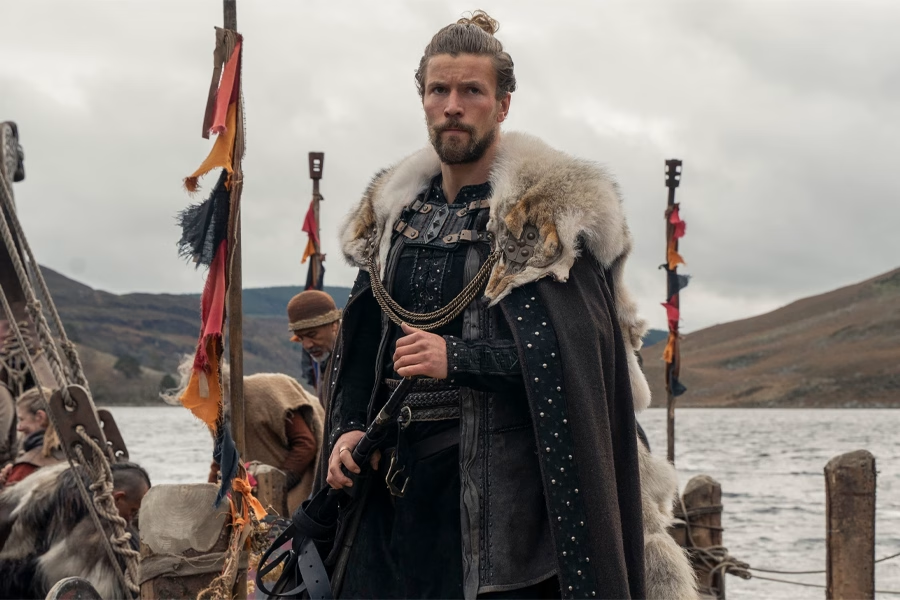
Picture: Vikings: Valhalla – MGM Television
Vikings was never known for its historical accuracy, and its sequel spin-off, Valhalla , takes even more creative liberties with history. At the very least, you’re here to see some of the drama and intense action that is believed to have unfolded during the life of the famed Viking explorer Leif Erikson. A third season and final season will arrive in July 2024!
Set 100 years after the events of Vikings, we follow the adventures of Viking explorers Leif Erikson and his sister Freydis Eriksdotter and Harald Hardrada, whose ambitions to become King will see him destined for conflict with the Norman king, William the Conquerer.
Seasons: 2 | Episodes: 12 Binge Time: 569 Minutes / 9.5 Hours Cast: Laurence Rupp, Jeanne Goursaud, David Schütter, Florian Schmidtke
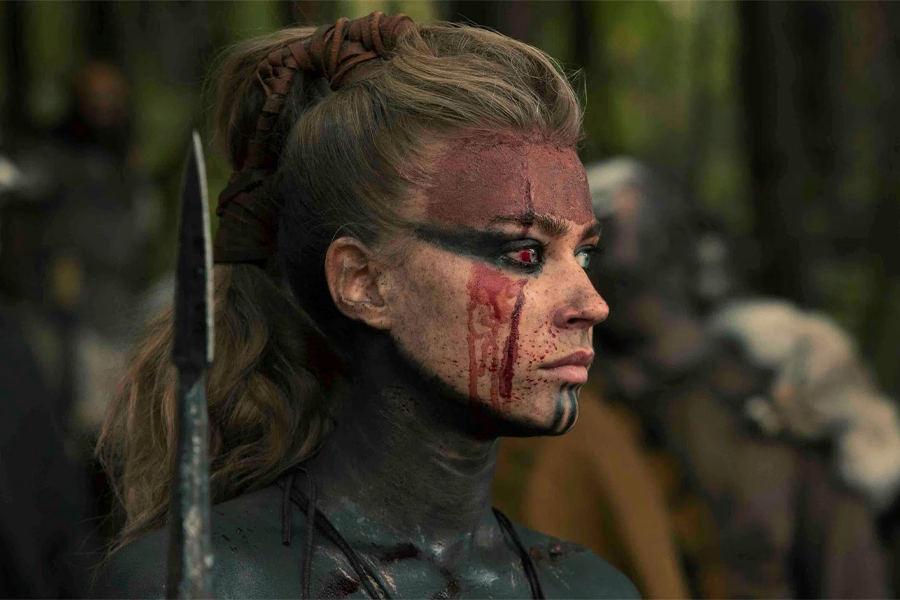
Picture: Barbarians – Netflix
Barbarians arrived in the middle of the Global Pandemic and were watched by millions of subscribers worldwide. Perhaps it was the long wait, but sadly, the second season didn’t perform as well . Regardless, the German original is one of the best period dramas on Netflix set during the era of the Roman Empire.
Torn between his loyalty to his people and the empire that raised him, the fate of Rome will be changed forever based on an officer’s choice in the forests of Germany.
Black Sails
Seasons: 4 | Episodes: 38 Binge Time: 2,027 Minutes / 33.8 Hours Cast: Jessica Parker Kennedy, Toby Stephens, Hannah New, Zach McGowan, Luke Arnold
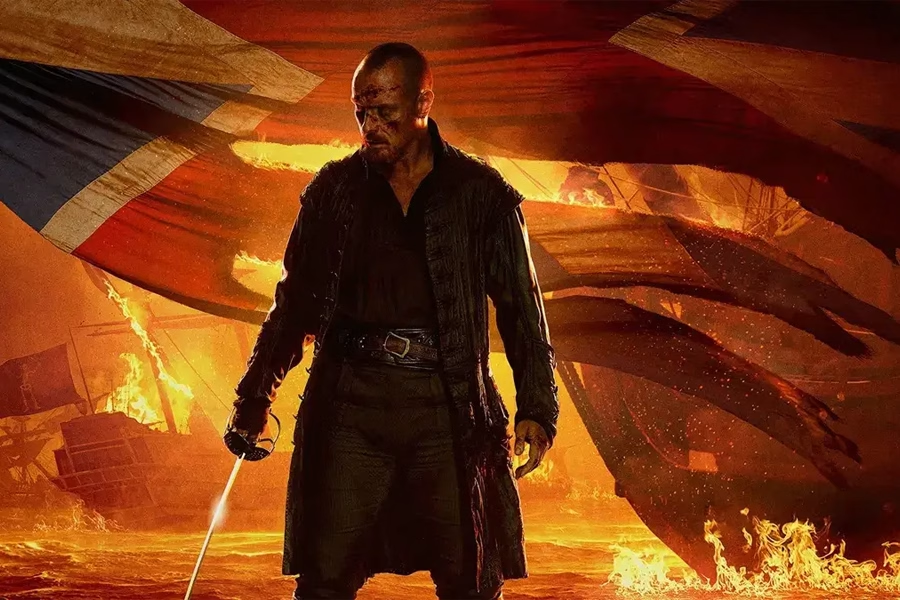
Picture: Black Sails – Film Afrika Worldwide
It is an ambitious action-adventure drama beloved by its fanbase. However, one of the only criticisms we’ve seen from fans of Black Sails is that more wasn’t made. If this is your first time considering watching Black Sails , you need not worry; the show received a coherent ending and didn’t end abruptly.
Twenty years before the events of Treasure Island, the feared Captain Flint and his young crew fight for the survival of New Providence Island, a republic and safe haven for other pirates.
The Empress
Seasons: 1 | Episodes: 6 Binge Time: 339 Minutes / 5.7 Hours Cast: Svenja Jung, Melika Foroutan, Devrim Lingnau, Philip Froissant, Johannes Nussbaum
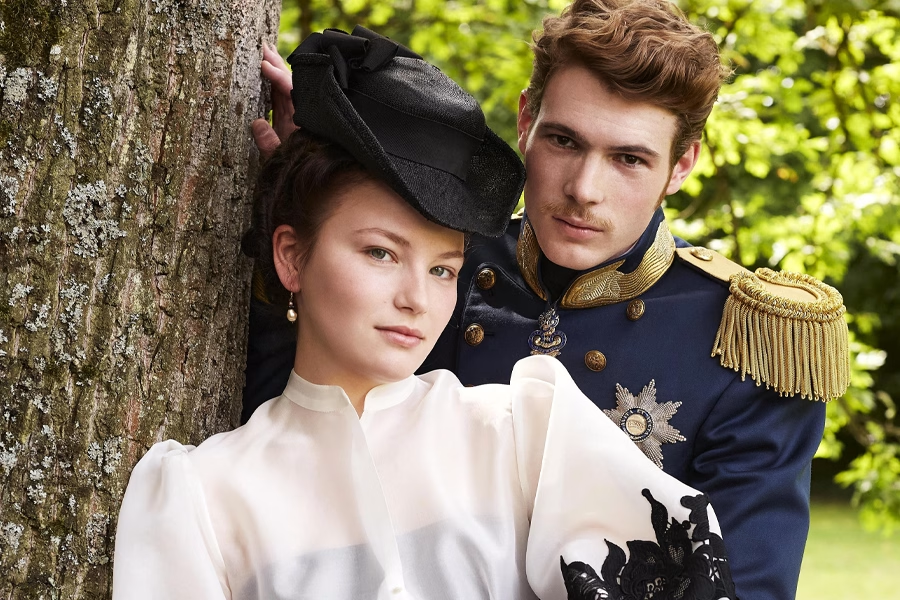
Picture: The Empress – Netflix
Thanks to the long and eventful life of Empress Elisabeth, there could be many seasons ahead of us , potentially making The Empress the potential German-language equivalent of The Crown .
At the tender age of sixteen, Elisabeth Wittlebach marries Franz Joseph, the Emporer of Austria. At odds with life in court and with her mother-in-law, Elisabeth must fight for her voice in court and become the figurehead of a struggling empire.
Seasons: 2 | Episodes: 20 Binge Time: 1,097 Minutes / 18 Hours Cast: Lorenzo Richelmy, Benedict Wong, Joan Chen, Remy Hii, Zhu Zhu

Picture: Marco Polo – Electus
One of the first and most ambitious original projects on Netflix, Marco Polo is often cited as a series subscribers would like to have seen brought back from the dead. Arguably, this was Netflix’s first attempt and answer to Game of Thrones .
Marco Polo, an Italian explorer, left his Venice home and traveled along the fabled Silk Road, eventually ending up in the Mongol Empire at the court of Kublai Khan.
Call the Midwife
Seasons: 12| Episodes: 109 Binge Time: 5,774 Minutes / 96 Hours Cast: Vanessa Redgrave, Laura Main, Jenny Agutter, Stephen McGann, Judy Parfitt
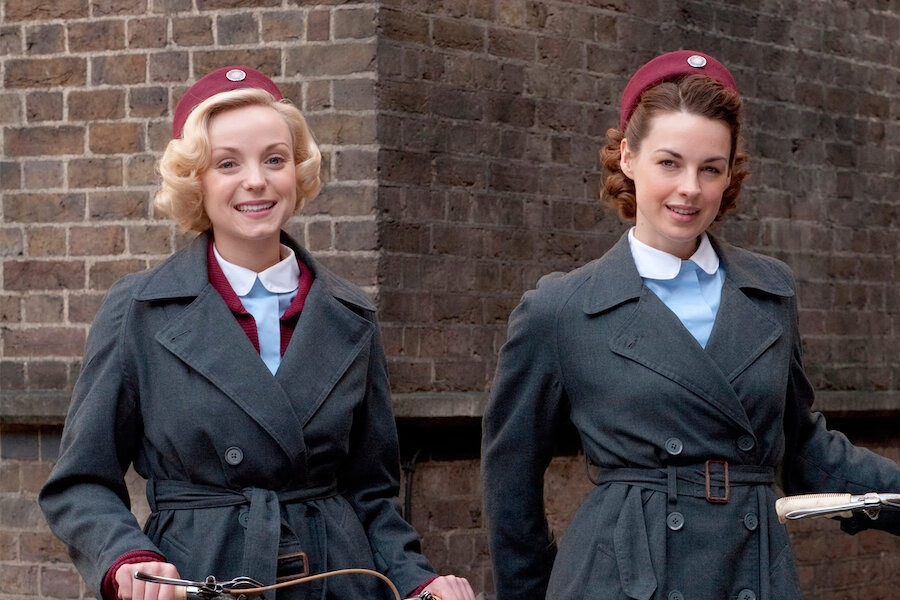
Picture: Call the Midwife – Neal Street Productions
One of the longest and most beloved running period dramas on the BBC, Call the Midwife has a significant audience in the UK and is loved worldwide.
In 1957, Jenny, a 22-year-old woman, left the comfort of her home to become a midwife in London’s East End.
Seasons: 3 | Episodes: 30 Binge Time: 1,497 Minutes / 25 Hours Cast: Andrew Koji, Olivia Cheng, Jason Tobin, Dianne Doan, Kieran Bew
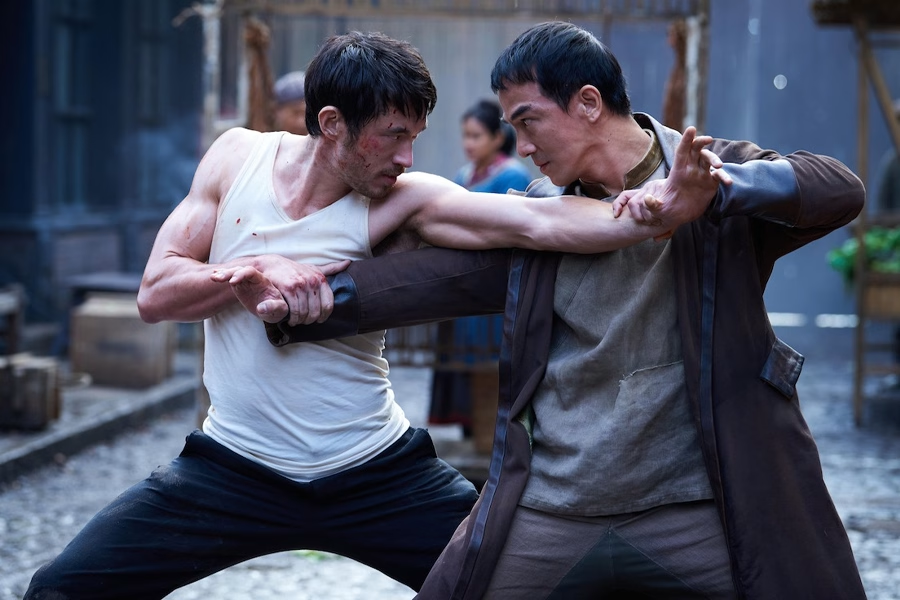
Picture: Warrior – Bruce Lee Entertainment
A recent addition to the Netflix library , there’s hope that if Warrior proves to be popular, then Netflix could continue the series as an original. Warrior is an excellent drama filled with incredible martial arts, such as Wing Chun, the famous martial art mastered by Ip Man and Bruce Lee.
San Francisco in the late 1800s, where Chinese martial arts prodigy and immigrant Ah Sahm becomes a hatchet man for one of Chinatown’s most powerful crime families.
Seasons: 6 | Episodes: 93 Binge Time: 4058 Minutes / 67.6 Hours Cast: Katheryn Winnick, Gustaf Skärsgard, Alexander Ludwig, Georgia Hirst, Alex Høgh Andersen

Picture: Vikings – World 2000 Entertainment
If you’re here for historical accuracy, then turn away. However, if you’re here for entertainment, look no further than Vikings . Travis Fimmel gave an incredible charismatic performance as the fabled Ragnar Lothbrok; however, his sons stole the show later in the series.
The saga of Ragnar Lothbrok and his legendary sons, who raided, pillaged, and conquered their way across the British Isles and Western Europe, kickstarting the Viking Age.
Anne with an E
Seasons: 3 | Episodes: 27 Binge Runtime: 1056 Minutes / 17.6 Hours Cast: Amybeth McNulty, Geraldine James, R.H. Thomson, Andrea Arruti, Dalila Bela
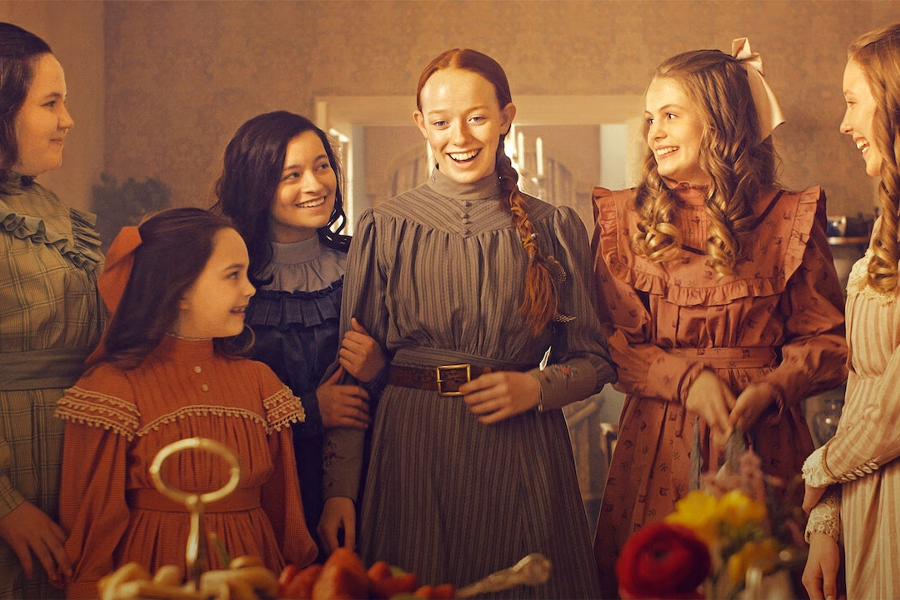
Picture: Anne with an E – Northwood Entertainment
Fans labored hard to have Anne with an E renewed beyond a third season. Sadly, it wasn’t to be, but as far as fan bases go, you’ll find few as loyal as those who continue to watch Anne with an E . At the very least, if you’re new to the series 27 fantastic episodes remain on Netflix, ready to be binged.
Anne, a young orphan girl, navigates life in the late 19th century on Prince Edward Island.
Seasons: 1 | Episodes: 7 Binge Time: 452 Minutes / 7.5 Hours Cast: Jack O’Connell, Michelle Dockery, Scoot McNairy, Merritt Wever, Jeff Daniels
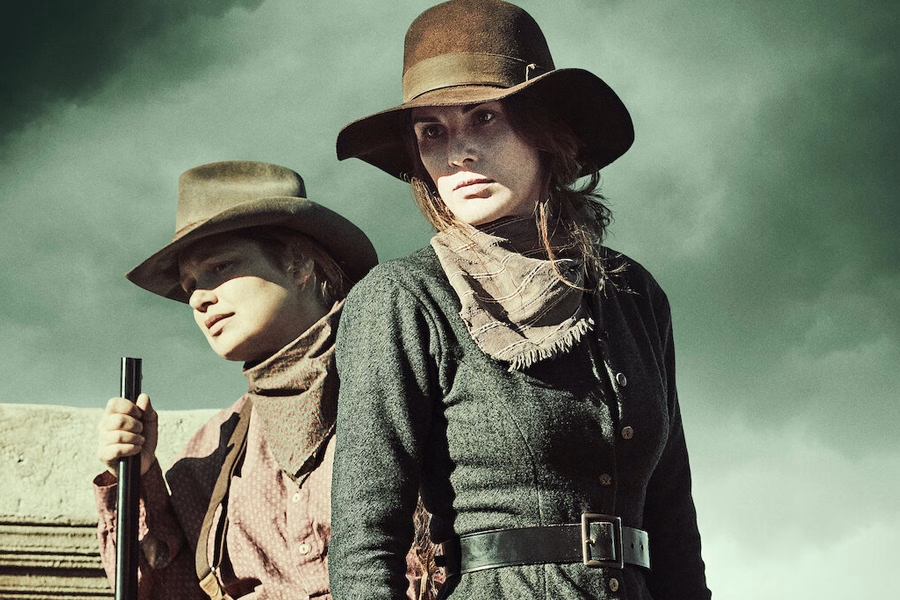
Picture: Godless – Netflix
Great Western dramas are few and far between, but without a shadow of a doubt, Scott Frank’s Godless is one of the best. Despite its status as a miniseries, fans of Godless have been craving for more of the Western for years. Hopefully, in the near future, The Abandons , Kurt Sutter’s new Western , will fill the void that Godless has left behind.
In the 1880s American Wild West, Frank Griffin, a dangerous and murderous outlaw gang leader, is on the hunt for former protege Roy Goode. His chase leads to La Belle, New Mexico, a town inhabited almost entirely by women.
Seasons: 6 | Episodes: 75 Binge Time: 4,289 Minutes / 71.5 Hours Cast: Caitríona Balfe, Sam Heughan, Sophie Skelton, Richard Rankin, Duncan Lacroix
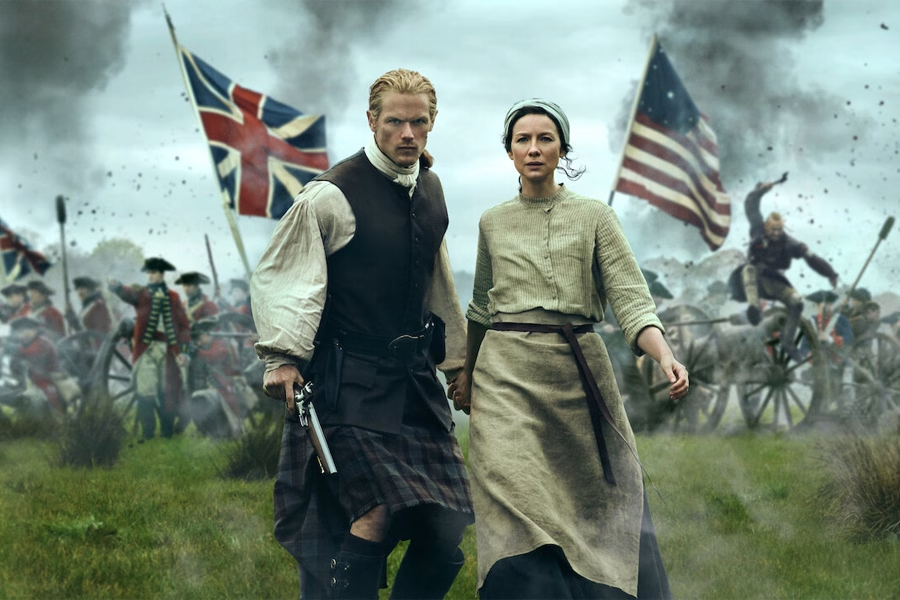
Picture: Outlander – Tall Ship Productions
For years, the Starz drama was one of the most highly requested shows that Netflix subscribers wanted licensed. Since 2019, seasons of Outlander have periodically been added to the streaming service, and it continues to be one of the most binged period dramas on the platform.
Claire Randall, a 1945 nurse, becomes lost in time when she is mysteriously sent to 1743. There, she is forced into marrying Jamie Fraser, a handsome highland warrior, and becomes embroiled in the Jacobite rising.
The Last Kingdom
Seasons: 5 | Episodes: 46 Binge Time: 2,538 Minutes / 42.3 Hours Cast: Alexander Dreymon, Eliza Butterworth, Arnas Fedaravicius, Mark Rowley, Emily Cox
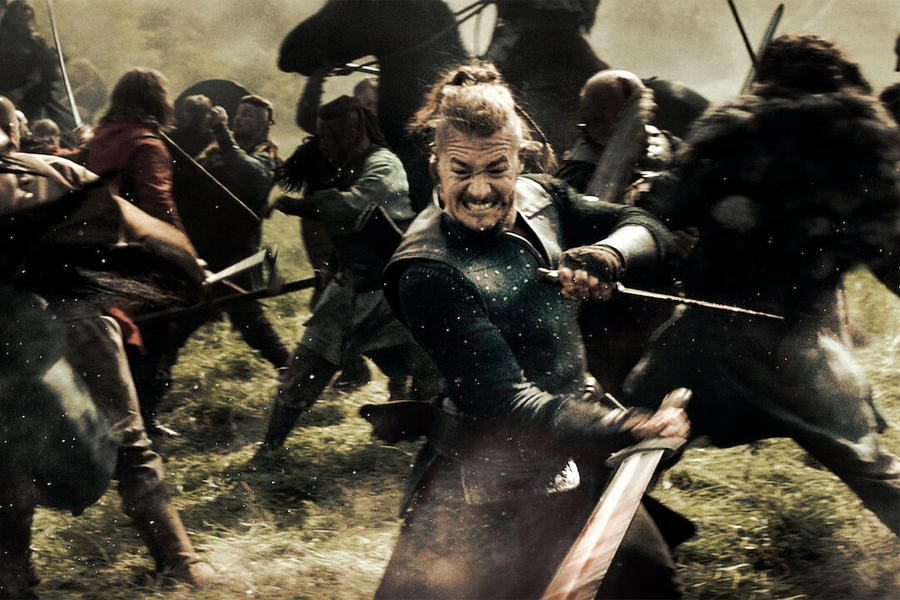
Picture: The Last Kingdom – Carnival Film & Television
The mid-2010s saw the rise of two popular historical fiction shows, MGM’s Vikings and the BBC’s The Last Kingdom . Both were extremely popular, but what paved the way for The Last Kingdom was Netflix continuing the series as an Original after two seasons on the BBC. The series is an adaptation of Bernard Cornwell’s beloved historical fiction novel The Saxon Stories. While there are many changes between the television adaptation and the books, viewers can’t help but fall in love with Uhtred and his merry band of fighters as they follow him on his journey to reclaim his ancestral home.
The son of a nobleman, Uhtred, is taken by Dane invaders and raised as one of their own. But when his adoptive father is murdered, Uhtred sets out on a quest to reclaim his birthright and ancestral home. On his journey, Uhtred treads a dangerous path between Danes and Saxons as influential leaders seek out the brave warrior to make a difference in the war for the future of a unified England.
Peaky Blinders
Seasons: 6 | Episodes: 36 Binge Time: 2063 Minutes / 34.4 Hours Cast: Cillian Murphy, Paul Anderson, Sophie Rundle, Helen McCrory, Finn Cole
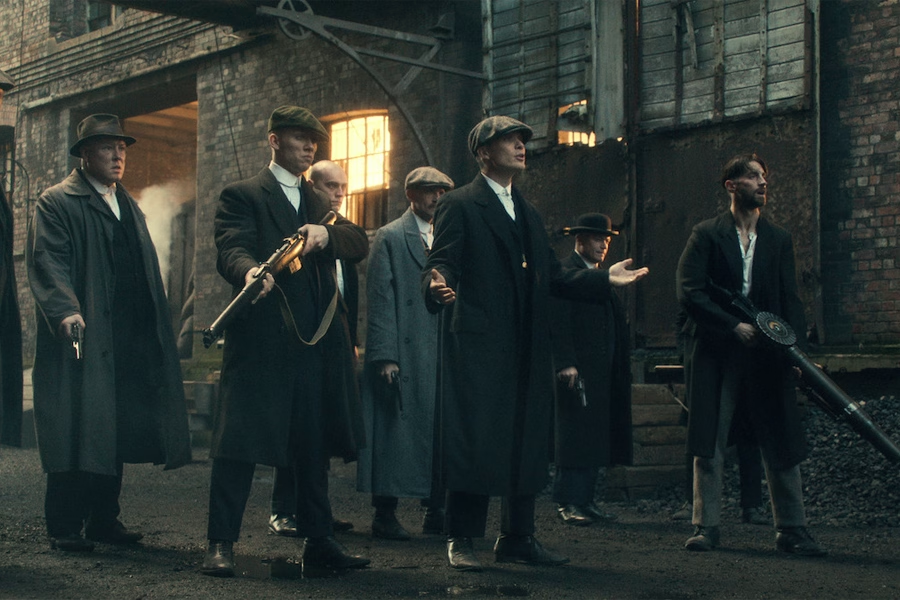
Picture: Peaky Blinders – Caryn Mandabach Productions
Tommy Shelby, the man who sparked a million loyal but dangerous memes, has been one of the most fascinating anti-heroes on television over the past decade. Played by Academy-Award winner Cillian Muprhy, the story of Peaky Blinders takes place in post-World War 1 Birmingham, England, a period of history and city that arguably hasn’t been the subject of enough attention from period dramas. Peaky Blinders is one of the best British crime dramas in recent history, and fans can look forward to a movie adaptation to conclude Tommy Shelby’s story.
After serving in the British Army during World War 1, Tommy Shelby and his brothers return home to Birmingham, England, where Tommy resumes control of his gang, the Peaky Blinders. To expand his new empire and ambitions beyond the streets of Birmingham, Tommy seeks to take advantage of post-war Britain.
Seasons : 2 | Episodes: 19 Binge Time: 1,021 Minutes / 17.1 Hours Cast: Jonathan Groff, Holt McCallany, Anna Torv, Sonny Valicenti, Stacey Roca

Picture: Denver and Delilah Productions
Still highly regarded as one of the best Netflix Originals ever made, fans continue to clamor for more of Mindhunter. Sadly, a third season isn’t happening anytime soon, thanks to its “indefinite hiatus.” Despite being cut short, Mindhunter is still 100% worth your time and will blow you away.
In the hope of broadening the Bureau’s approach to criminal psychology and investigations, two FBI Agents in the 1970s interview the very worst of the USA’s serial killers.
Bridgerton / Queen Charlotte
Seasons: 4 | Episodes: 30 Binge Time: 1,863 Minutes / 31 Hours Cast: Nicola Coughlan, Claudia Jessie, India Amarteifio, Adjoa Andoh, Ruth Gemmell
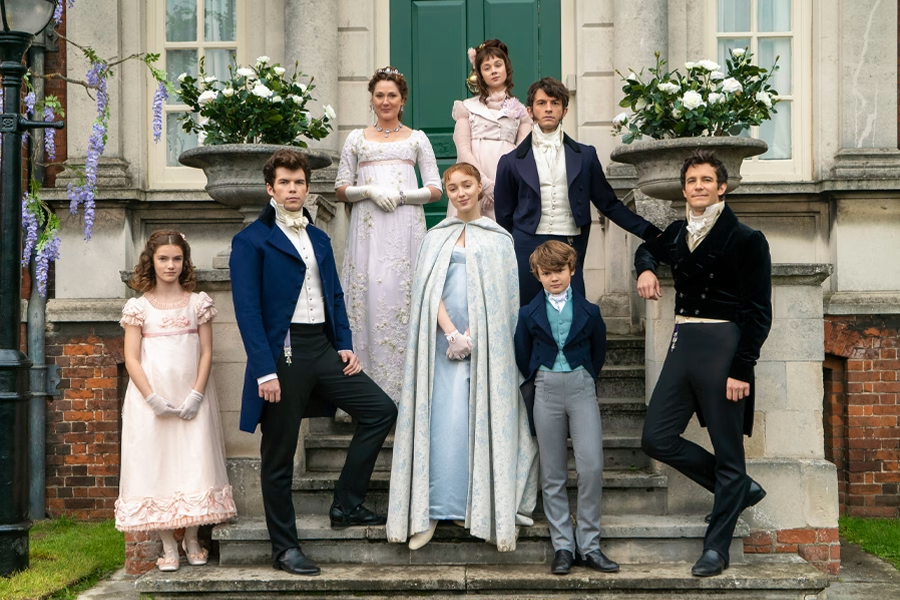
Picture: Bridgerton – Shondaland
Shondaland’s adaptation of Julia Quinn’s beloved romance novels has taken Netflix by storm since its debut in 2020. Watched by tens of millions worldwide , the series has over a billion watch hours and over a hundred million Netflix views. With each new season following a different sibling of the Bridgerton family, we fully expect to see Netflix adapt the entirety of the Bridgerton story, not to mention some spin-offs along the way.
In the Regency Period, eight siblings of the esteemed Bridgerton family search for love and happiness among London’s high society. Meanwhile, Lady Whistledown, a curious new gossip columnist, sets high society into a frenzy. Her criticisms of London’s elite and her ability to reveal their secrets have her readers desperate for every issue, including the Queen of England.
What is your favorite period drama on Netflix? Let us know in the comments below!
Jacob joined What's on Netflix in 2018 as a fulltime writer having worked in numerous other industries until that point. Jacob covers all things Netflix whether that's TV or movies but specializes in covering new anime and K-dramas. Resides in Norwich in the United Kingdom.
More on Peaky Blinders

- - Season 6 - Final Season was added to Netflix on June 10th, 2022
- - Season 5 was added to Netflix on October 4th, 2019
- ‘Peaky Blinders’ Netflix Movie: Cillian Murphy Returns & What We Know So Far
- Next on Netflix UK 2024: Every New Show and Movie Announcement
- ‘House of Guinness’ Netflix Series from ‘Peaky Blinders’ Creator: What We Know So Far
Newest Articles - What To Watch on Netflix

Trigger Warning Review - Netflix's Jessica Alba Action Thriller Disappoints

'Ultraman: Rising' Movie Review: One of the Strongest Netflix Films of the Year

Most Watched Series & Movies on Netflix of All Time

'Hit Man' Review: Should You Watch Glen Powell's New Movie on Netflix?
Search What's on Netflix
Most recent tags, popular tags, notifications from what's on netflix.

IMAGES
COMMENTS
Coin of King Cnut.. Viking activity in the British Isles occurred during the Early Middle Ages, the 8th to the 11th centuries CE, when Scandinavians travelled to the British Isles to raid, conquer, settle and trade. They are generally referred to as Vikings, but some scholars debate whether the term Viking represented all Scandinavian settlers or just those who used violence.
Overview: The Vikings, 800 to 1066. By Professor Edward James. Last updated 2011-03-29. The story of the Vikings in Britain is one of conquest, expulsion, extortion and reconquest. Their lasting ...
During Viking voyages, it took around 7-10 days to sail from Norway to England.From Denmark to England, the journey usually lasted 3-5 days.From Sweden to England, it took about 5-7 days.. These timeframes offer insight into the duration of Viking voyages to England.Wind patterns, waves, and the size and efficiency of the Viking ships could affect these durations.
Vikings in Britain: background and legacy. Historians disagree about the origin of the word Viking. In Old Norse the word means a pirate raid, from either vikja (to move swiftly) or vik (an inlet). This captures the essence of the Vikings, fast-moving sailors who used the water as their highway to take them across the northern Atlantic, around ...
A massive 1,100-year-old graveyard leads to a surprising new view of the Nordic legacy in Britain. St. Wystan's church in Repton. In 873-874, a Viking army is believed to have entrenched in the ...
By 871, the Vikings had defeated the armies of Northumbria, East Anglia and Mercia, killing their kings or forcing them to flee. There is archaeological evidence of the Vikings' enormous camps in Lincolnshire, Staffordshire and Yorkshire, which tells us just how large this army was. The only Anglo-Saxon kingdom which wasn't defeated was Wessex.
History Hit. 11 Apr 2019. The Viking raids and subsequent settlements define the period known as the Viking Age in Britain, which had profound consequences on the development of the culture, law and language. The raids started in June of 793 CE when three ships approached the shore by the abbey of Lindisfarne, off the northeast coast of England.
Harald's rebellious son, Sven Forkbeard, led Viking raids on England beginning in 991 and conquered the entire kingdom in 1013, sending King Ethelred into exile. Sven died the following year ...
Global Vikings. Despite their popular image, the Viking age wasn't just about invading and pillaging. As this 2019 article for HistoryExtra by historian Levi Roach notes, trading links between England, the continental mainland and Scandinavia were apparent very early on in the Viking story; "Vikings were traveling from Norway to a marketplace in the Danish port at Ribe as early as 725 ...
When the Vikings appeared in the British Isles at the end of the eighth century, England did not exist. Instead, the parts of the island that now fall within England's modern boundaries comprised a number of kingdoms of various sizes. The most significant of them were Wessex in the south west, Mercia in the Midlands, Northumbria in the north ...
Why the Vikings came to Britain. I can retell the story of how the Vikings came to settle in large parts of Britain. 1 Slide deck. 1 Worksheet. 2 Quizzes. 1 Video. Free lessons and teaching resources about the vikings: why did they come to the british isles?
700-800 nautical miles. The routes and distances of Viking voyages to England varied based on departure and destination. From Norway to Northumberland, the distance ranged from 500 to 600 nautical miles. If the Vikings sailed from Denmark to East Anglia, they would have traveled roughly 400 to 500 nautical miles.
Life in Viking Britain shown through the eyes of a typical family with an exploration of the reasons for Vikings coming to Britain. Suitable for Key stage 2, Early First and Second Level
The Vikings' homeland was Scandinavia in what is today Sweden, Norway, and Denmark. To sail to England or northern Britain in particular, it would take The Vikings about 3 to 6 days in good and favorable conditions at an average speed of 8 knots. But in foul weather, the Vikings could delay their departure, run ahead of the storm, or travel at ...
Viking expansion was the historical movement which led Norse explorers, traders and warriors, the latter known in modern scholarship as Vikings, to sail most of the North Atlantic, reaching south as far as North Africa and east as far as Russia, and through the Mediterranean as far as Constantinople and the Middle East, acting as looters, traders, colonists and mercenaries.
The early attacks and raids by Vikings in Britain were a precursor to the events of 865. That year saw the invasion, and occupation, of a sizable portion of Northeast England by a coalition of Scandinavian Vikings, warriors, and nobility. Modern academia prefers to call it the Great Viking Army. However the Anglo-Saxon Chronicle referred to it ...
- Geographical features: The North Sea provided the main route for Viking voyages to England, with its open waters and proximity to Scandinavia and England. Numerous islands and unpredictable weather added complexity to the journey. - Island hopping: The Vikings used island hopping to navigate the challenging waters. By moving between ...
What are the remnants of Viking influence on Britain? The Viking Age in Britain ended around 1066 B.C.E. By this time, all the Scandinavian settlements in England and Scotland were Christianized, and the Norse pagan religion gradually faded. What remained of the Viking culture was absorbed into the culture.
Explore the timeless traditions and extraordinary coastal beauty of Britain and The Northern Isles. Sail the North Sea to the English Channel, enjoying culturally immersive overnight stays in the region's most legendary cities for an unparalleled Viking journey.
You have 1 item s in your shopping cart that still require s payment.. Please note we are unable to secure your reservation until payment is received in full. Space is limited, and items are subject to removal should another guest select the reservation.
How the Vikings got here. During the Viking era Scandinavian sailors were the undisputed masters of the sea. In their ground-breaking longships they were able to travel as far east as the Caspian ...
The Viking Cultural Route is a far-ranging and significant cross-border collection of sites, stories and heritage that represent the shared Viking legacy of Europe and beyond. It is one of the earliest registered cultural routes, having first been certified in 1993. It recognises how, for centuries, the Vikings transmitted culture and ...
Hosted by Tom Macan. Journey through the past with Ambassador Tom Macan, a Viking Resident Historian and former British diplomat, as he presents an iconic lecture on the "History of Britain.". In addition to being a lecturer, Macan was an ambassador to Lithuania, deputy high commissioner in India and governor of the British Virgin Islands.
Sponsored by Viking. Standing on the sun deck in the evening air, watching the lights of Paris reflecting on the city's rippling waterways …it's hard to picture a better home base to explore ...
Admire Rhine Valley vistas from a 900-year-old castle. Sample the culinary delights of Austria's Wachau Valley. Learn the Viennese waltz, visit Melk's Benedictine Abbey and delve into Nuremberg's World War II history. Indulge your senses on this 15-day journey spanning the best of Europe, tracing the Rhine, Main and Danube Rivers between the windmill-dotted waterways of Holland and the ...
Boring, boring England are stinking out Euro 2024! Winners and losers as Gareth Southgate's soulless Three Lions produce more dross - but Cole Palmer proves why he has to start in the knockouts
The second half of Vikings season 6 brought the show's story full-circle, with Ubbe's storyline recalling Ragnar's desire to discover new land, while Ivar and Hvitserk once more returned to raid ...
Remember when back in 2018, former Minnesota Vikings wide receiver Adam Thielen got caught on camera yelling at New England Patriots head coach Bill Belichick? It went viral during the 2018 season ...
Clay, Schatz and Walder rank the Titans with the 25th-best unit in the league heading into the 2024 regular season, ahead of only the Las Vegas Raiders, New England Patriots and Denver Broncos ...
But when his adoptive father is murdered, Uhtred sets out on a quest to reclaim his birthright and ancestral home. On his journey, Uhtred treads a dangerous path between Danes and Saxons as influential leaders seek out the brave warrior to make a difference in the war for the future of a unified England.